Submitted by WA Contents
Marià Castelló Architecture designs residence with fragmented volumes on Formentera island
Spain Architecture News - Apr 12, 2021 - 11:52 7279 views

Formentera-based architecture studio Marià Castelló Architecture has designed a residence composed of three fragmented all-while volumes on Formentera island, Spain.
Named Es Pou, the origin of some of the solutions of this 94-square-metre house was developed based on the studio's "Architecture Fragments" project that "was born tangent to the borders between different plastic arts, especially drawing, photography, painting, sculpture and architecture."
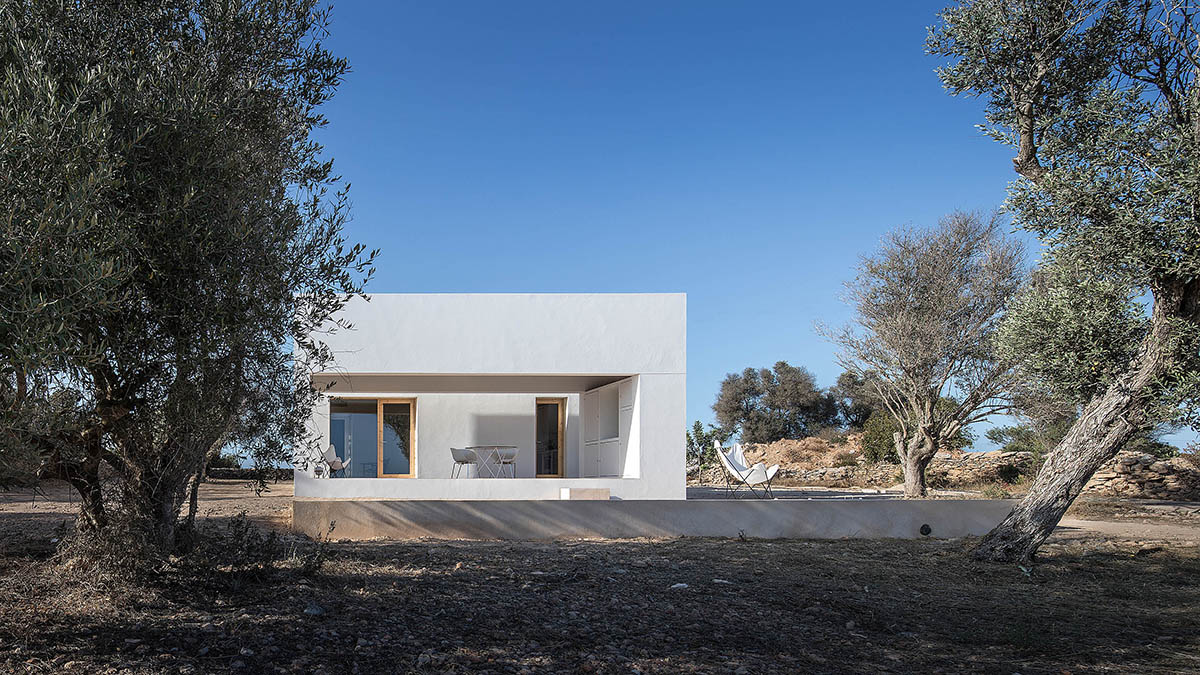
Divided into three volumes, each volume of this residence is dedicated to different functions, while maintaining its unity and overall language as compact as possible.
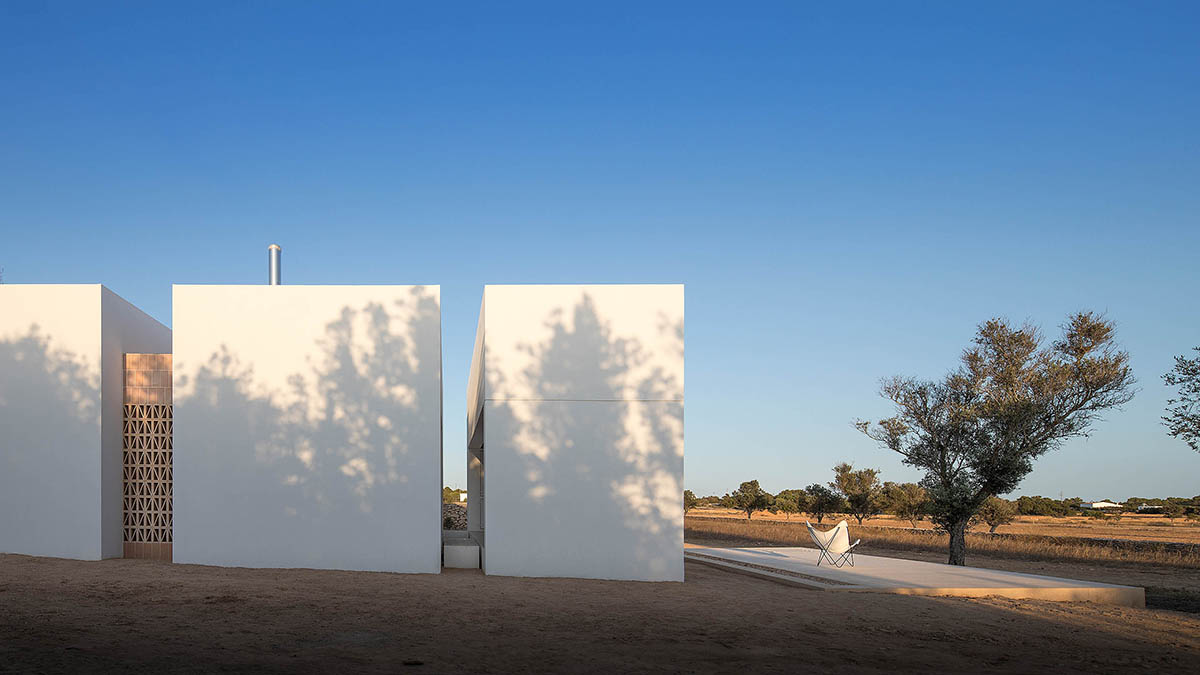
As the studio explains, "Es Pou de Can Marianet Barber" is a historical place name in the interior of the island of Formentera in Spain. The house is situated on a rural plot where several pre-existents condition the insertion of this small first residence in the territory.
"Among them, the network of centenarian dry stone walls stands out, as well as the organization of the crops," adds the studio.

The house is located in the western area of the plot, parallel to a trace of more than a kilometer in length, oriented to the south and protected from the setting sun by a mass of vegetation, thus releasing the most fertile area to give continuity to the existing agricultural activity.
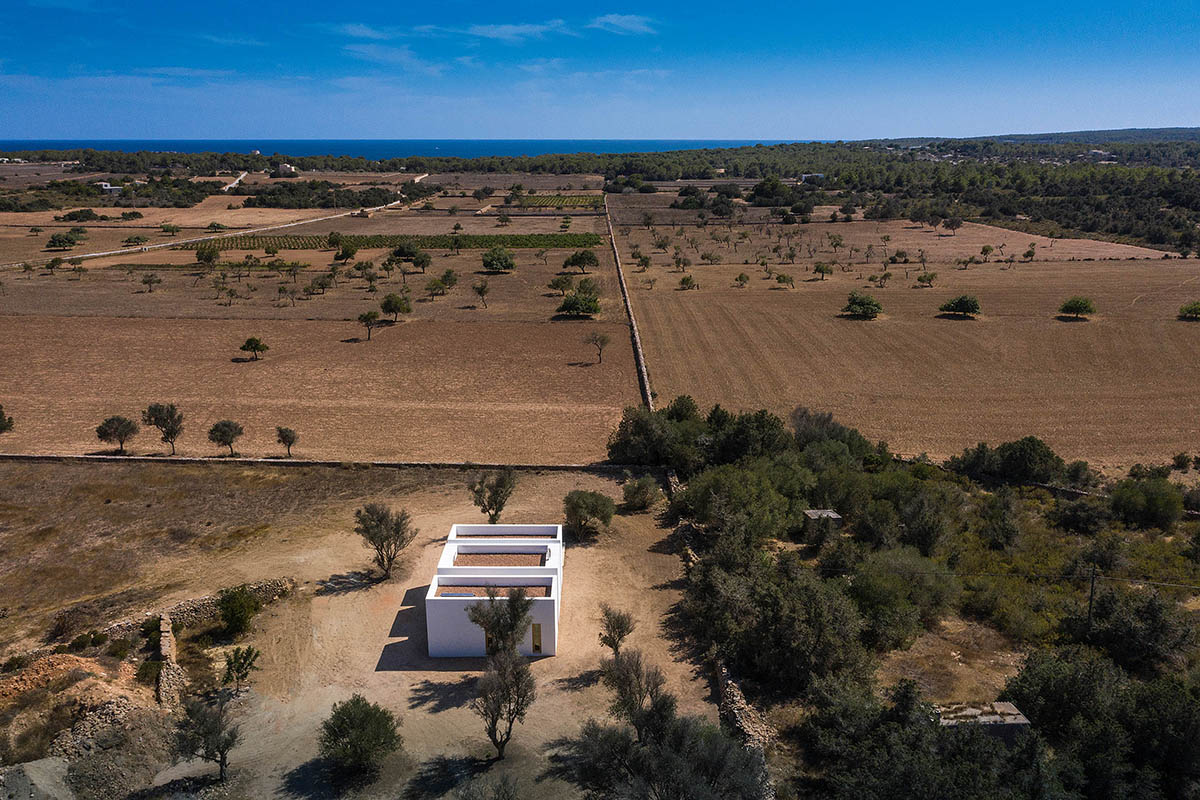
The architects wanted to divide the volumes into three to organize the program while providing it with a smaller grain and in accordance with the scale of the landscape.
From South to North, the first volume houses a porch that offers solar protection, the second contains the more public program, and the third two bedrooms.
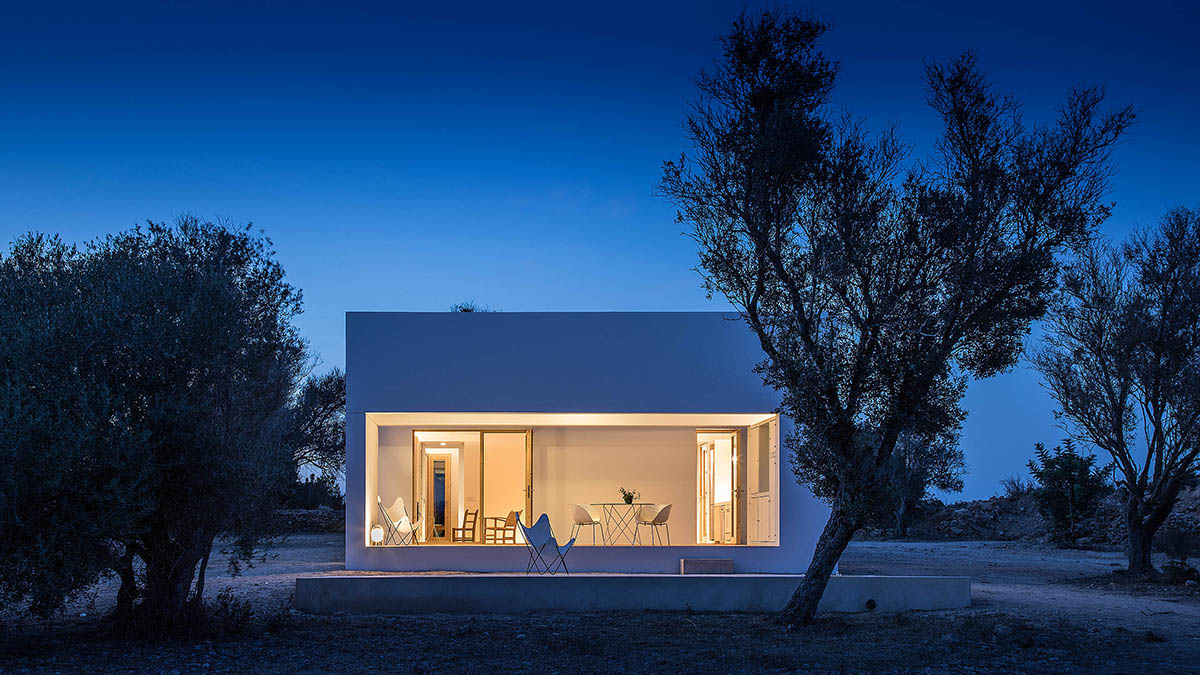
Among them there are transverse strips that are integrated to physically separate the volumes, these strips are also used for ventilation and lighting, as well as providing them with services and connections.
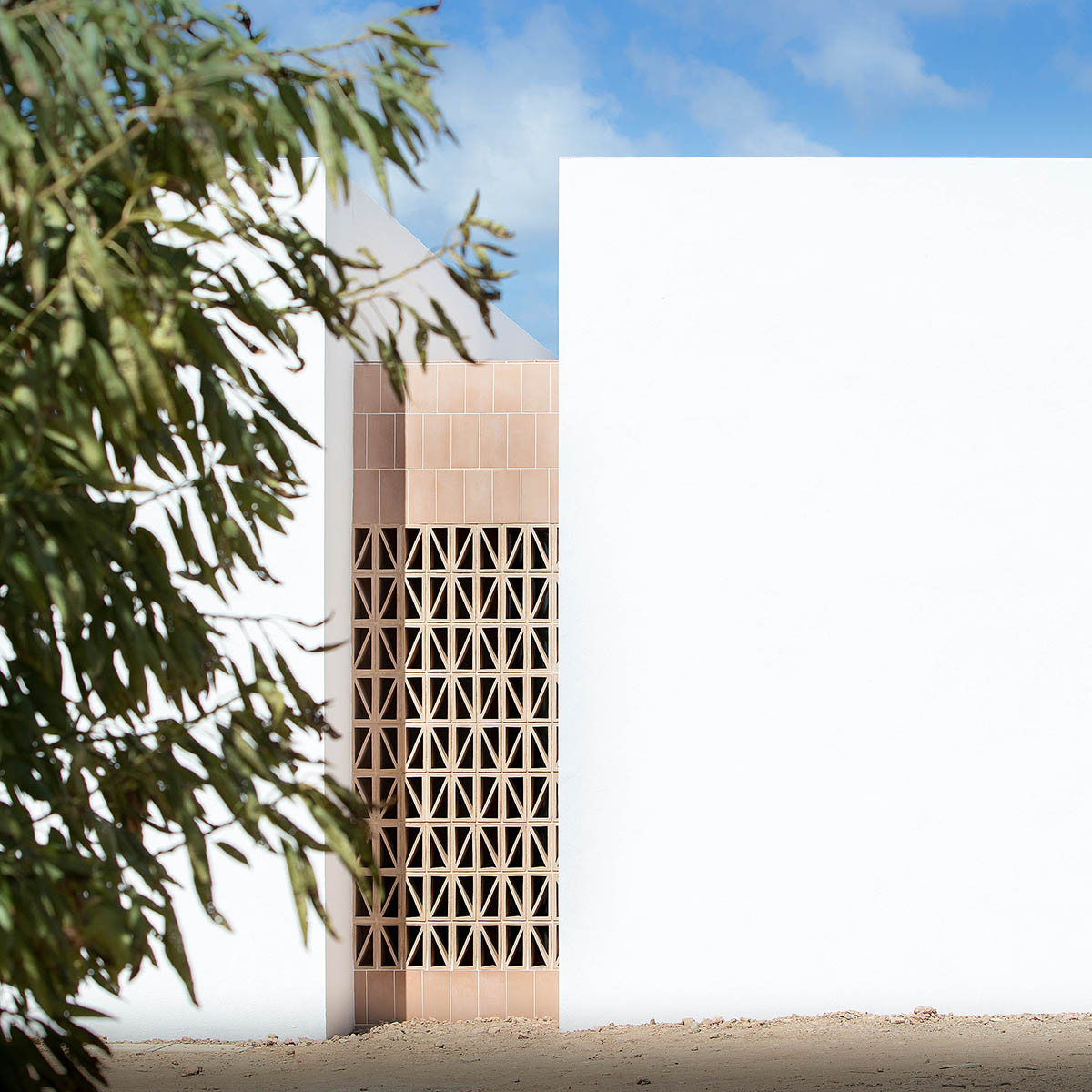
In front of the house, the studio used a cistern that makes the house self-sufficient in terms of water supply while offering a solarium for the coldest months of the year.
"From the inside and through the porch, deep perspectives are discovered towards the flat landscape of wheat and oat fields, where the soft and warm color of the earth and the muted greens of the almond and fig trees predominate," added the studio.
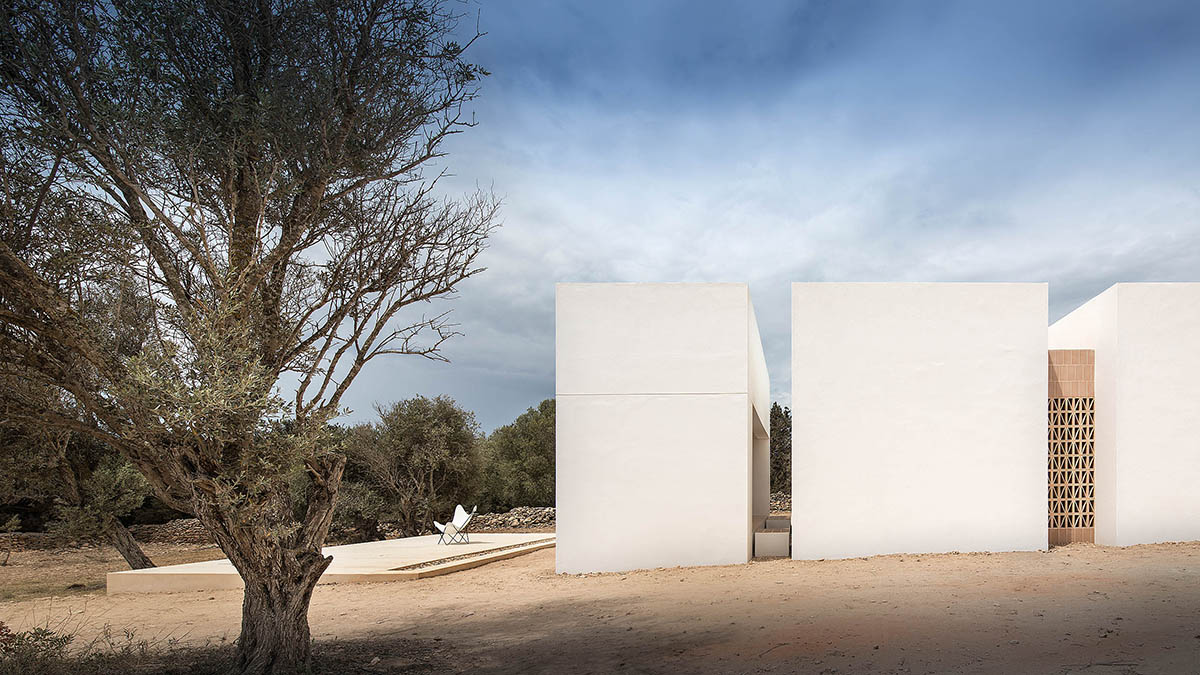
Thanks to ceramics and wood, the house receives daylight and reflects color and material approach from the outside, according to the architects, these two noble materials are combined in a subtle and timeless way.
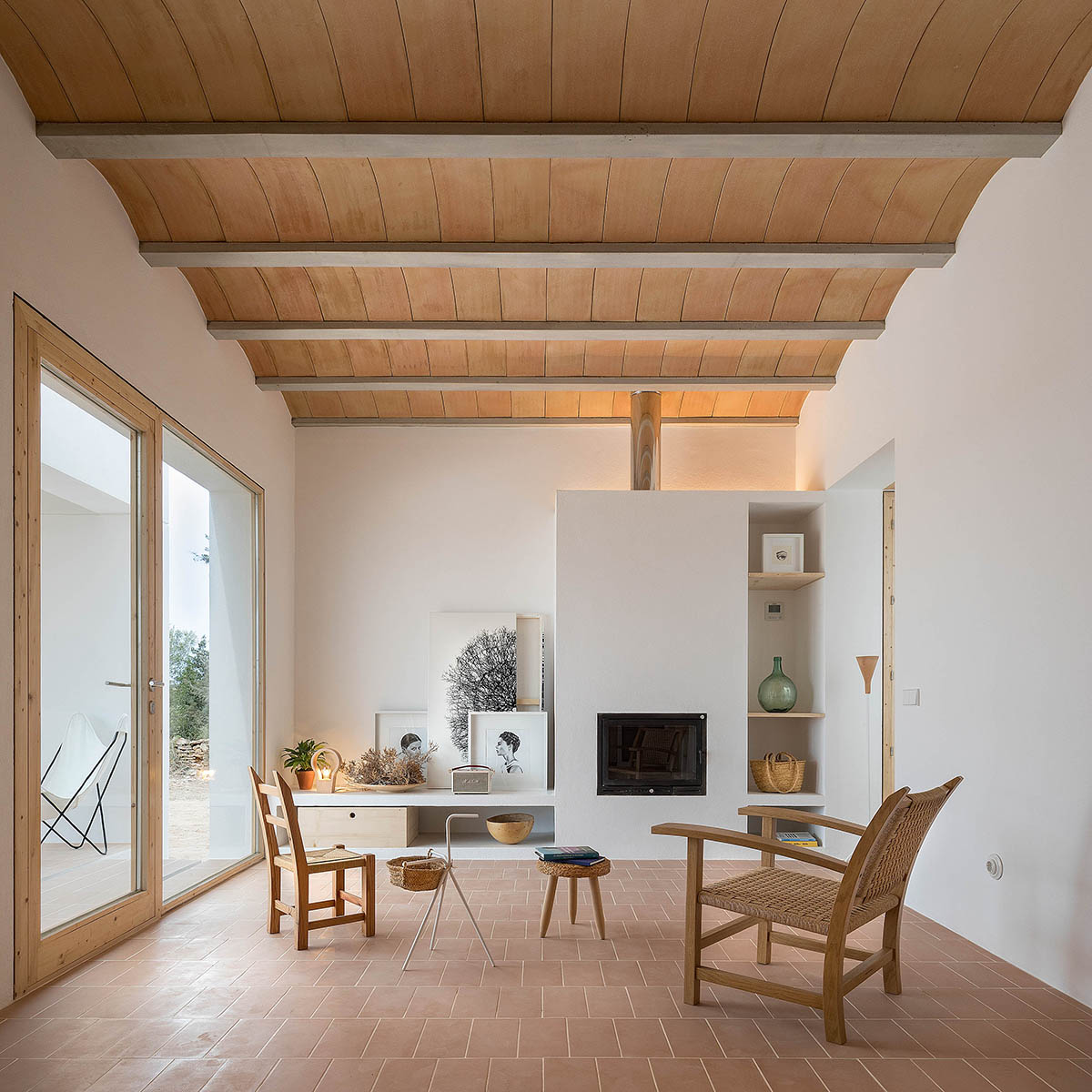
In the interiors, the architects wanted to transfer the warmth of the earth to the ceiling and pavements, which are resolved by means of Mallorcan-style ceramic vaults and pressed terracotta tiles.
Likewise, the tiles are used to solve various other elements, such as façade cladding, roof finish, the headboard of the master bedroom, or pebble gravel, processing in situ the losses of the ceramic elements used.
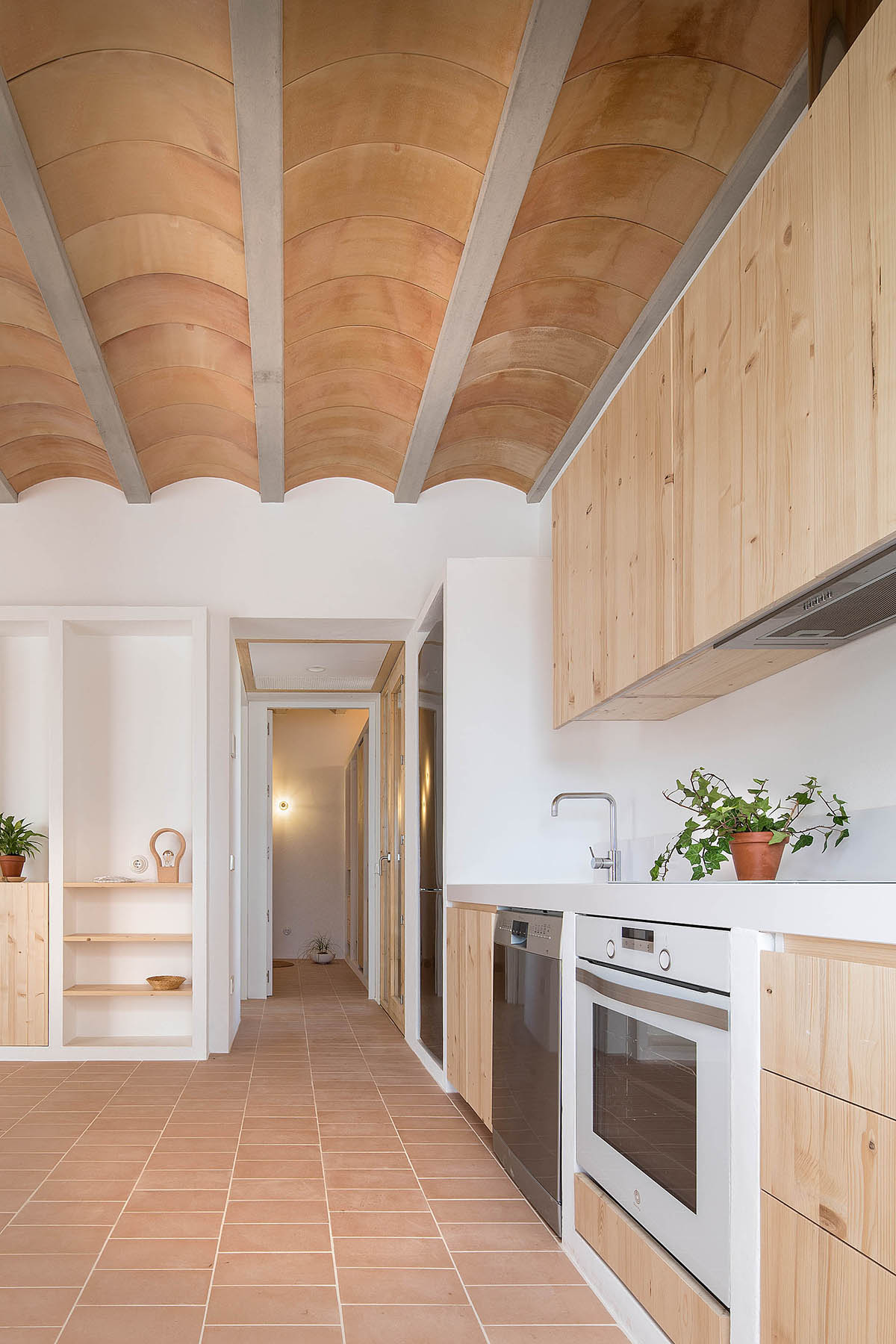
The freshness associated with the color of the vegetation predominates in the humid areas, where some vertical walls are covered with vitrified ceramic tiles of a diluted green color and identical dimensions to the rest of the pieces.
The light filters inwards through its passage through ceramic lattices, generating, in turn, a constant evolution of lights and shadows.
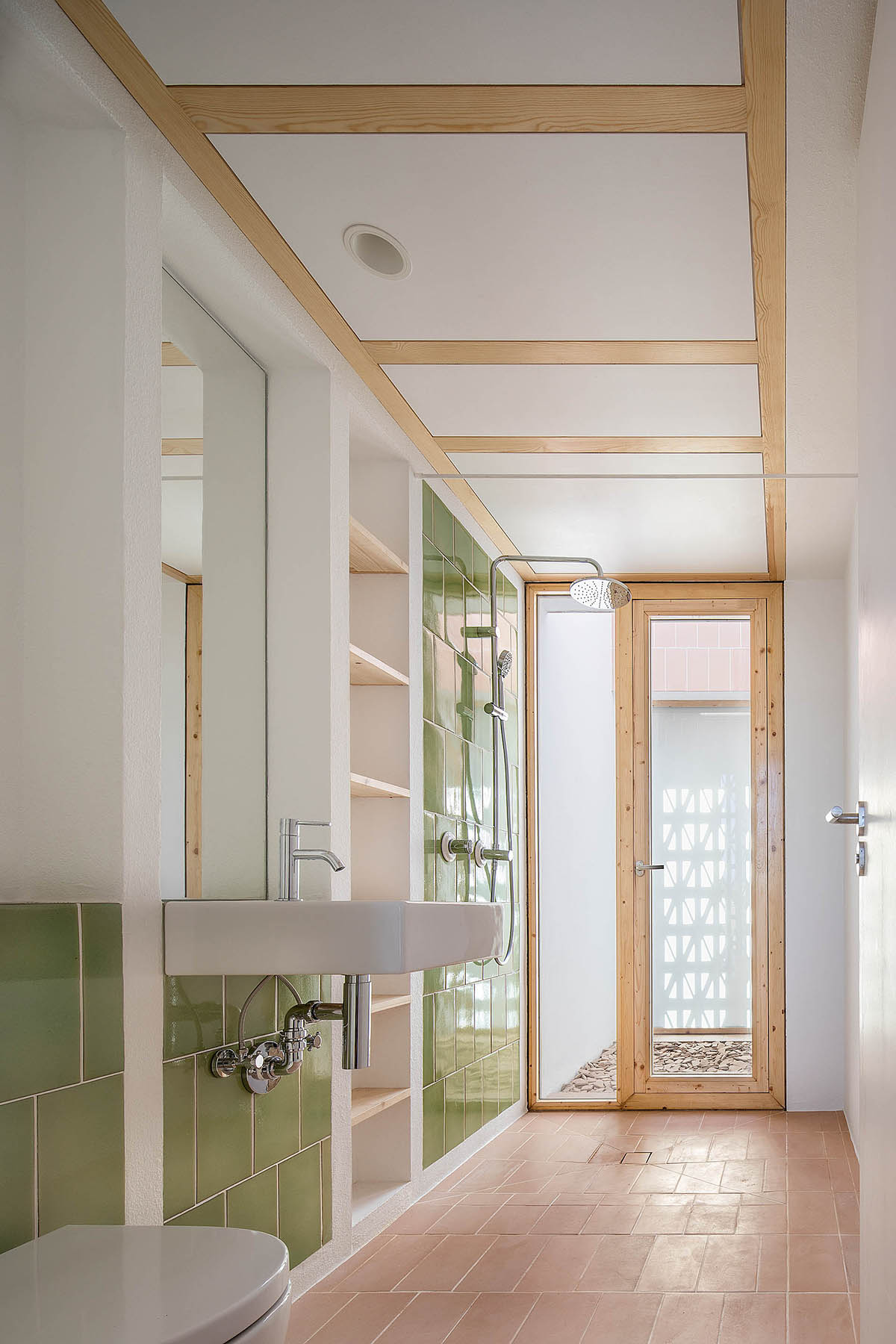
As the team noted, the coherence and material harmony have led to solving with white vitrified porcelain electrical mechanisms the integration of the installations in unique places such as the headboard of the master bedroom, as well as other more common such as lamp holders and toilets.
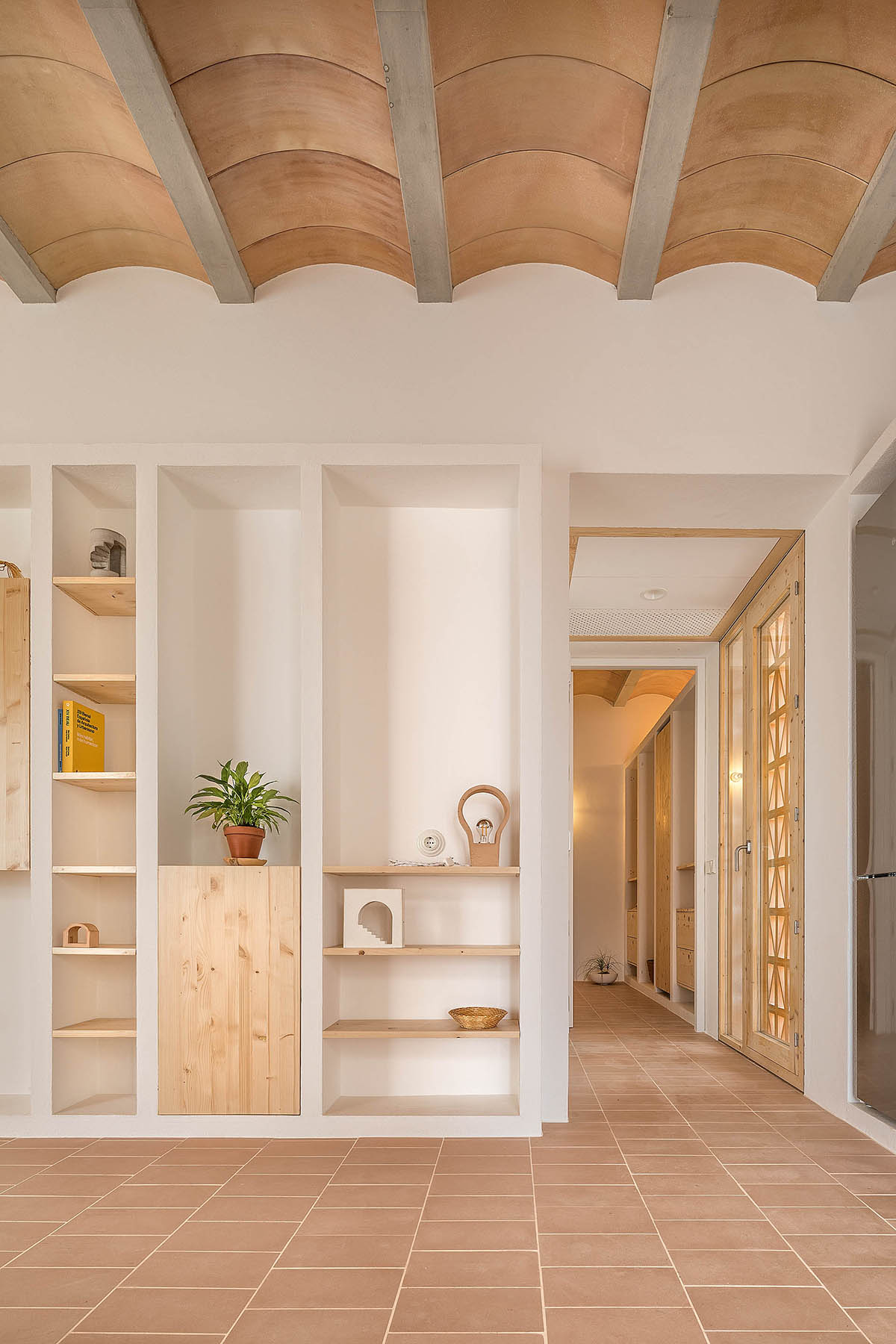
A set of lights and special pieces made by hand with formwork made in the architects' studio have also been specifically designed for this project, seeking their chromatic and dimensional integration in the context of the coatings.
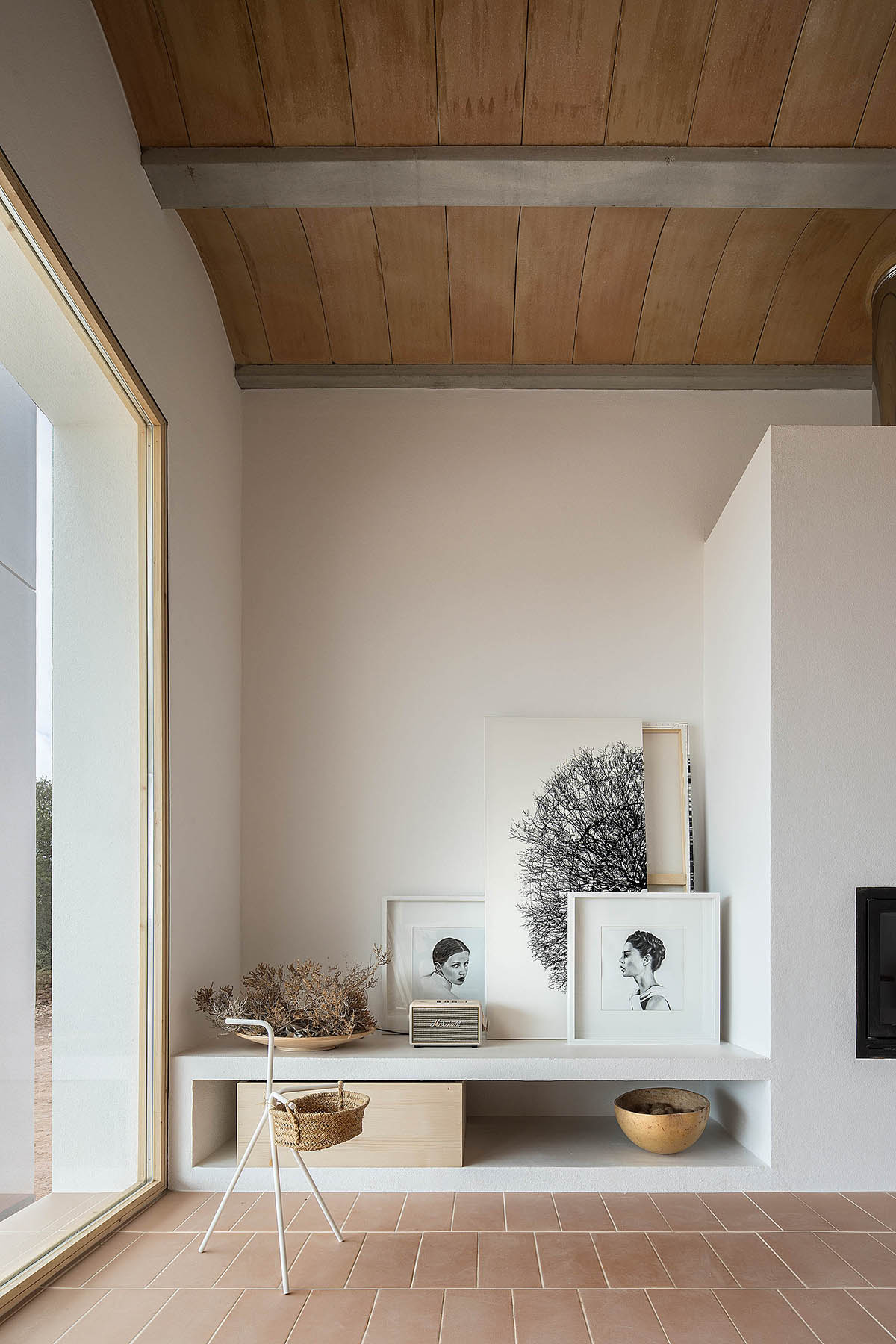
Most of the furniture has been custom-designed integrated into the architecture itself, while icons such as the Torres Clavé armchair, from 1934, or the traditional chairs from Formentera pay homage to the Mediterranean artisan tradition.
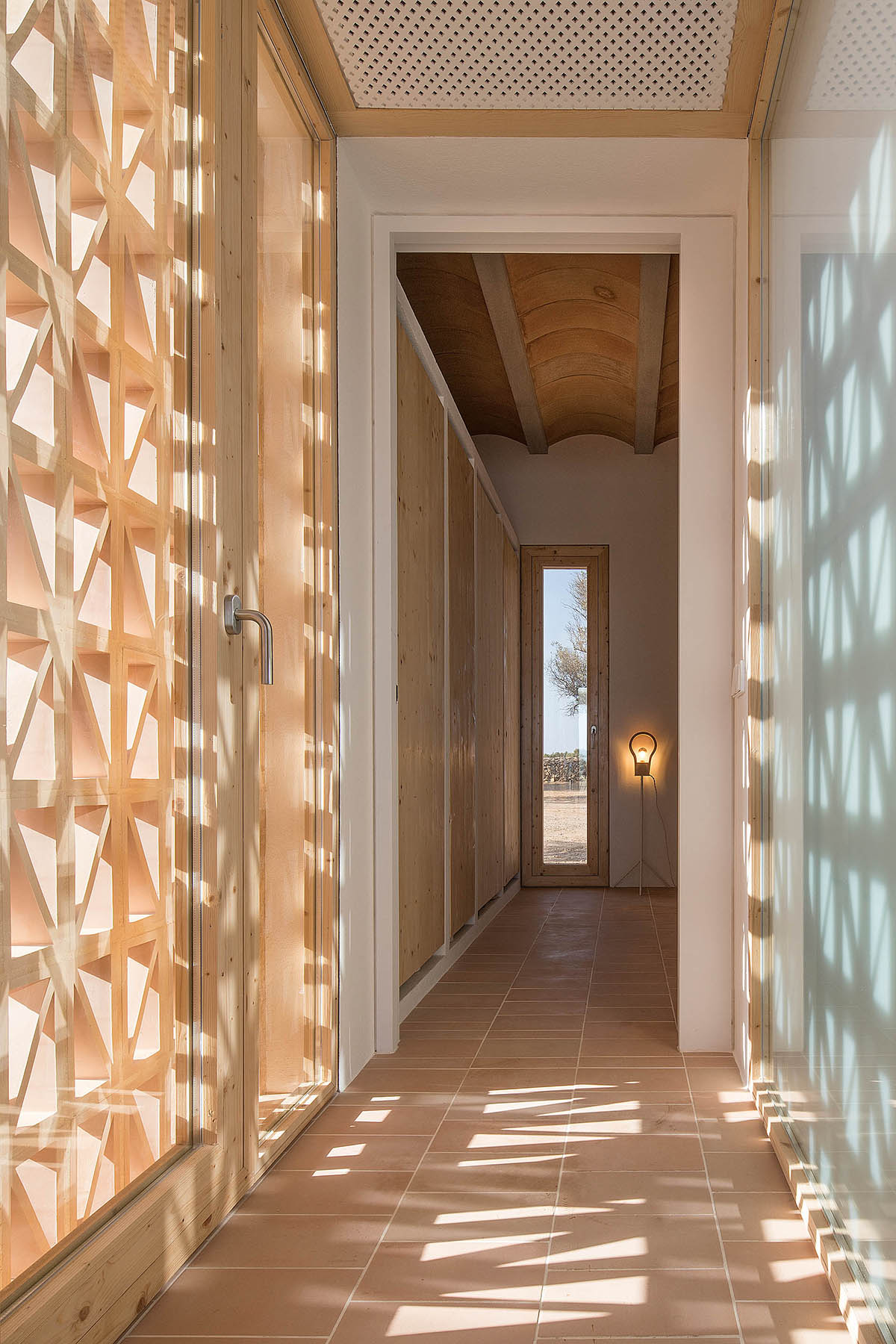
Other more contemporary pieces such as the table and coffee tables from the D12 collection designed by Marià Castelló and Lorena Ruzafa for the editor Diabla Outdoor, provide a slight material and chromatic counterpoint to the set.
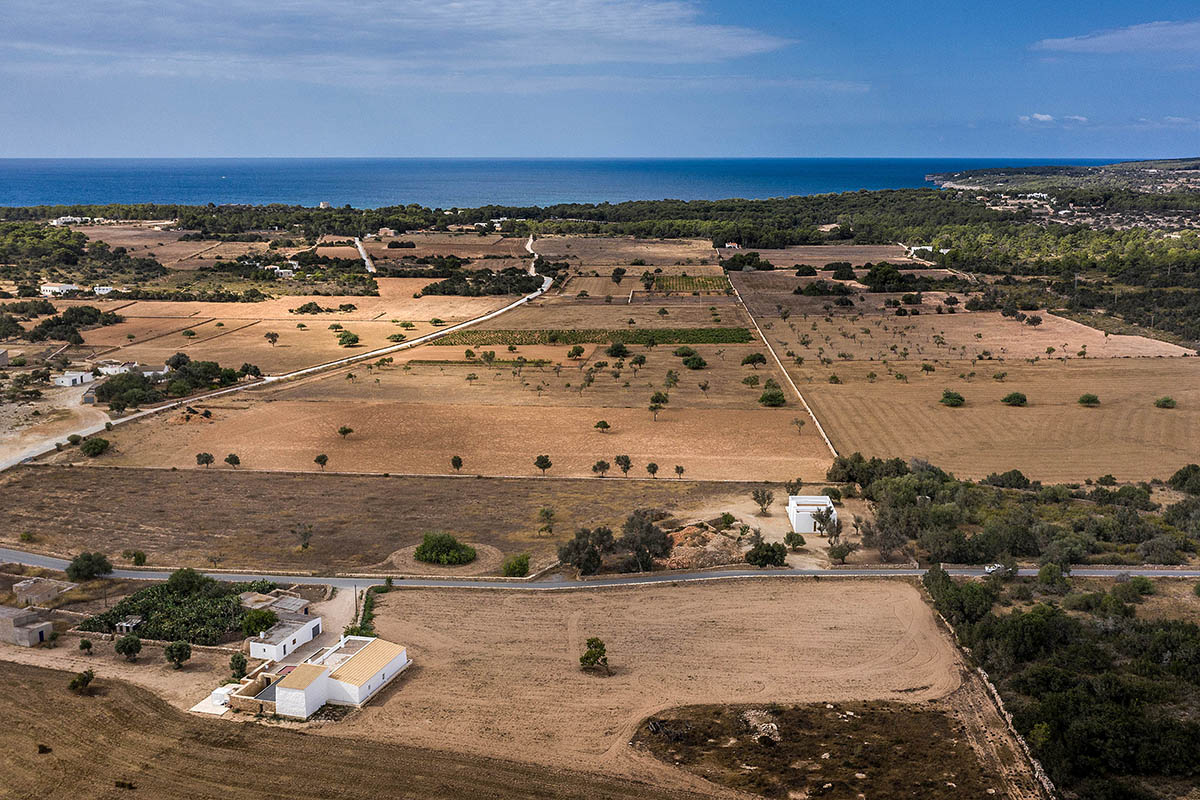
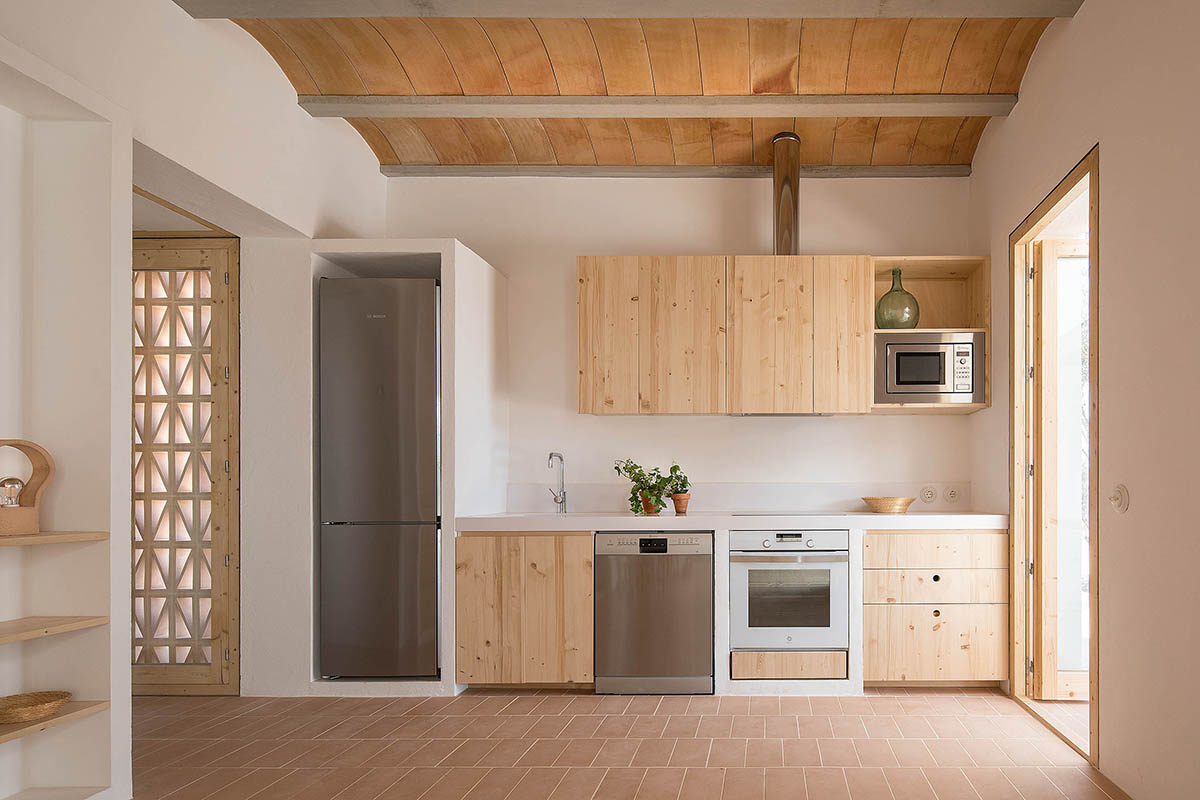
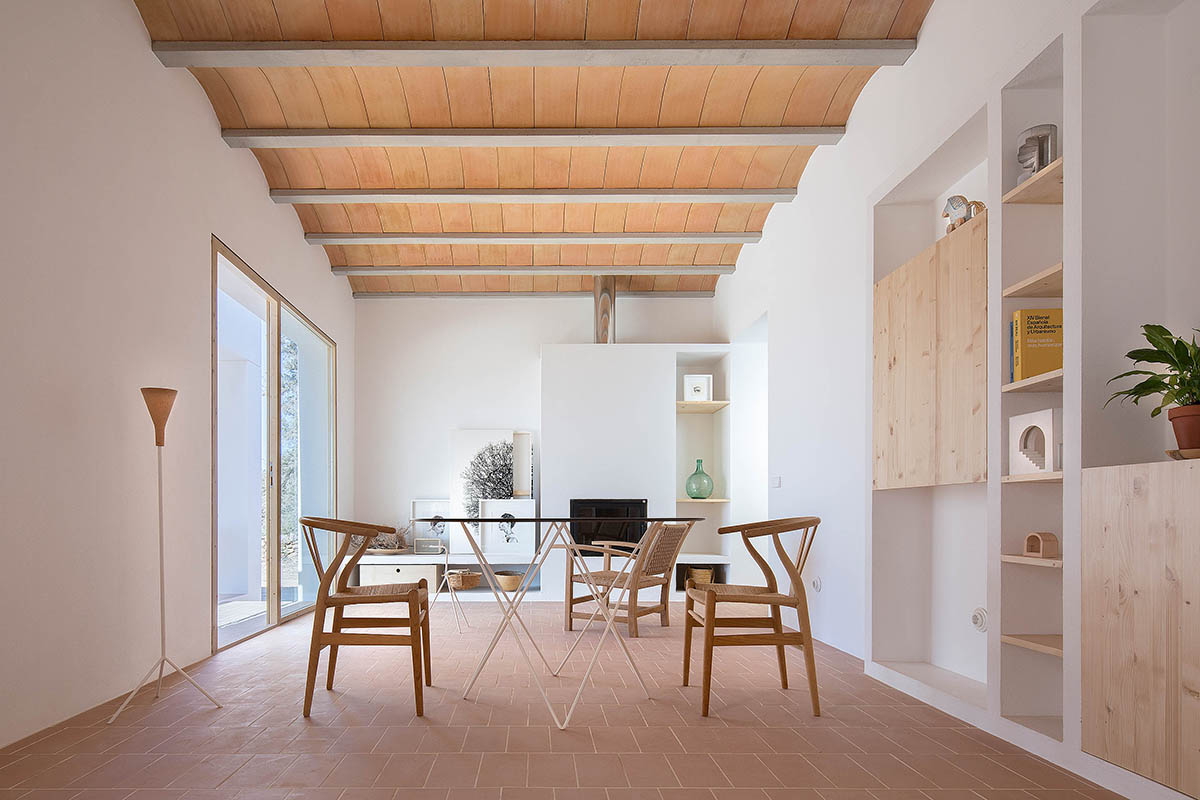
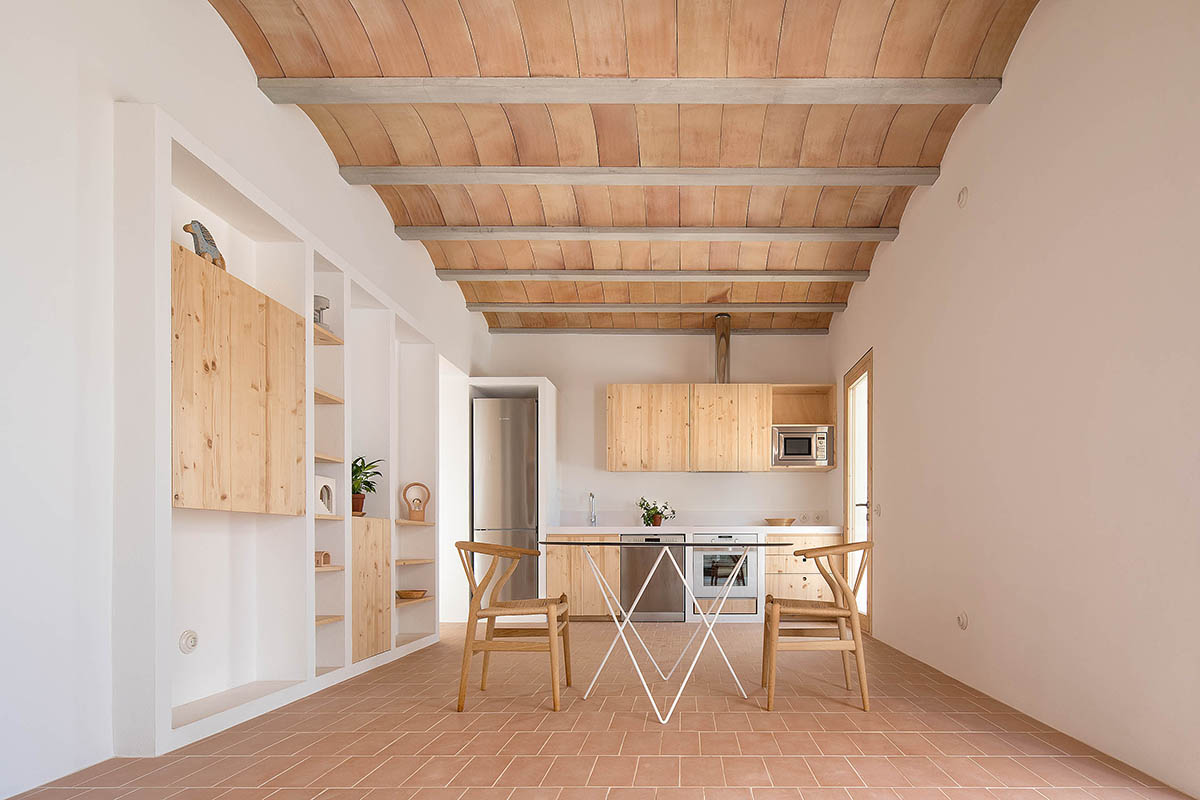
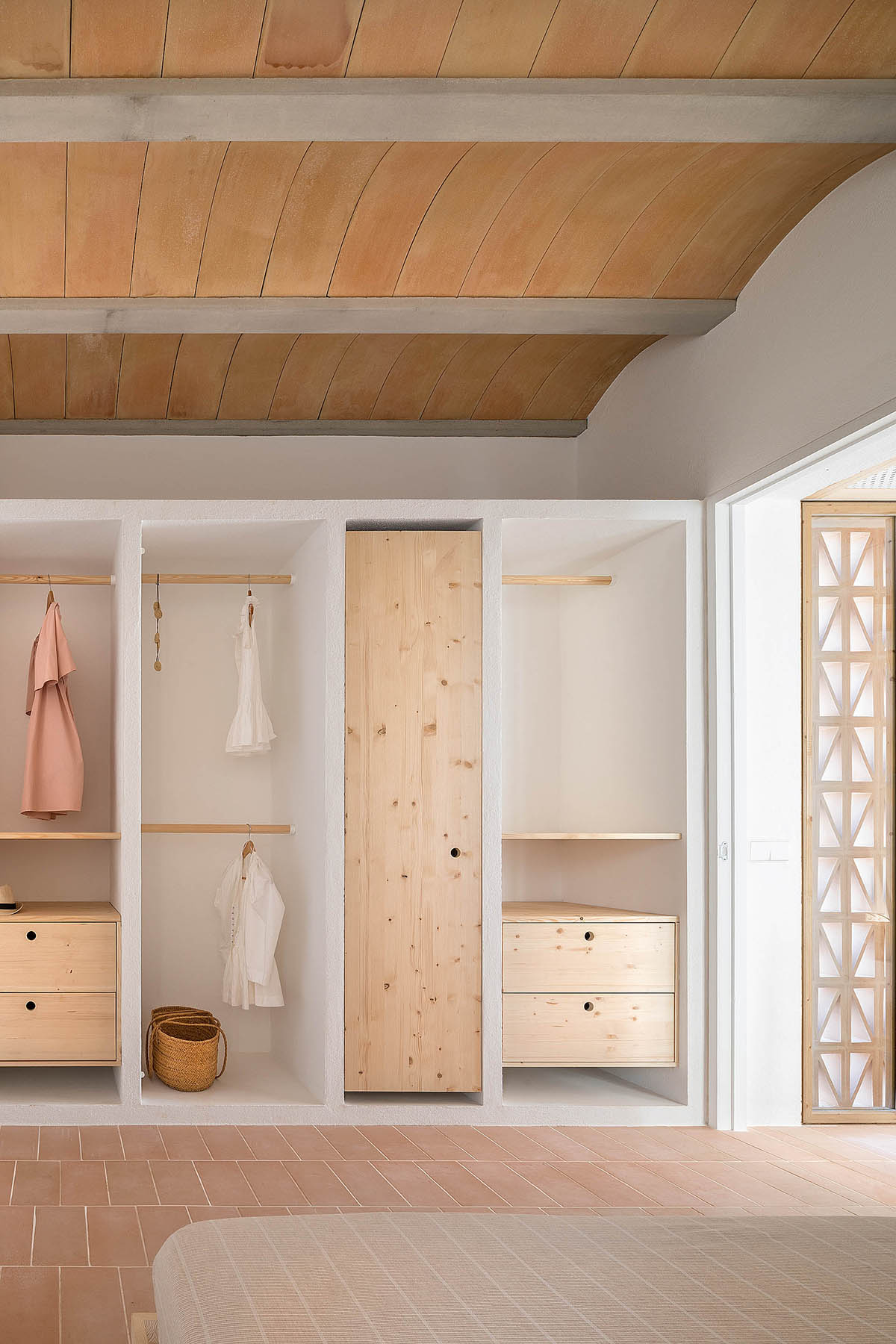
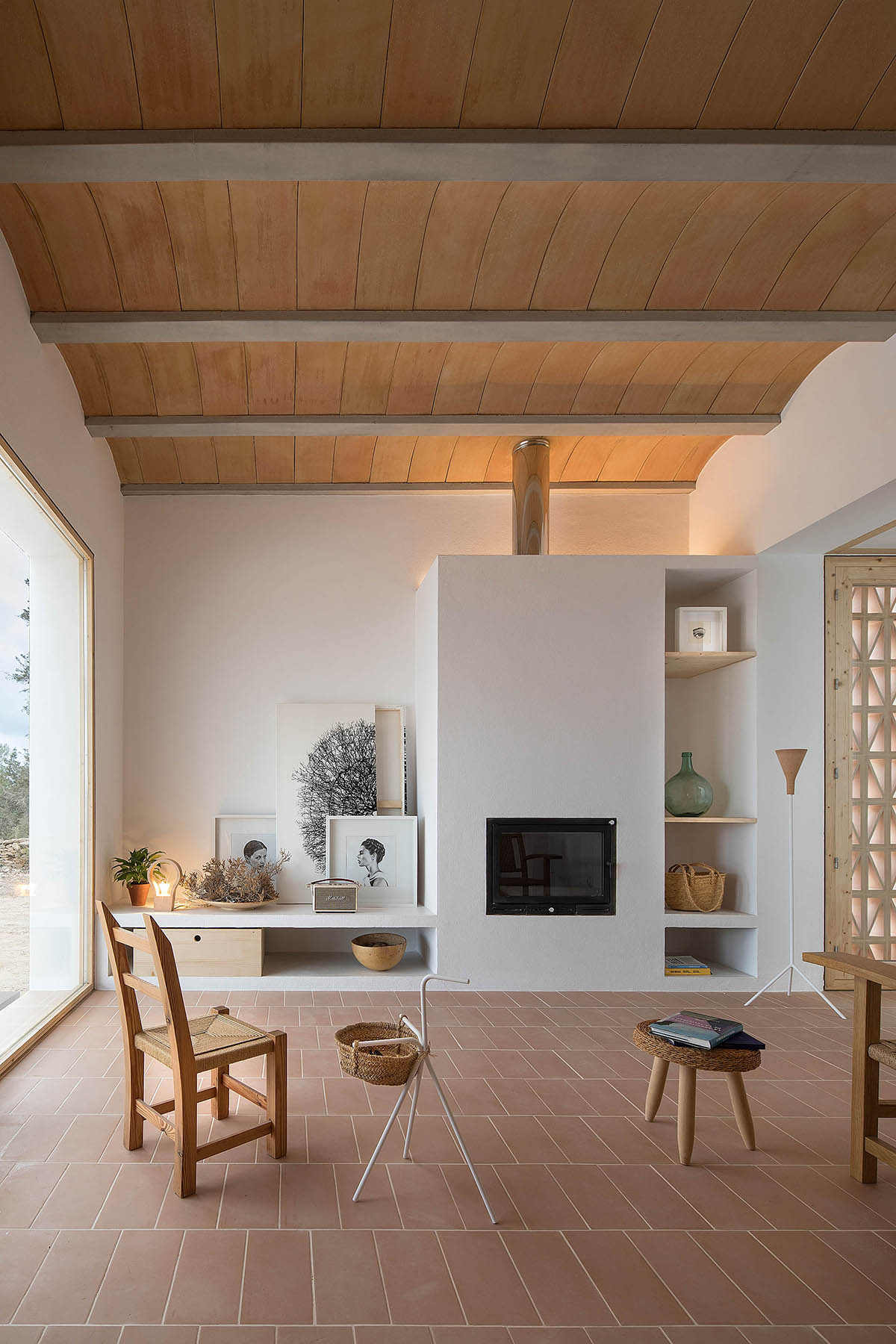
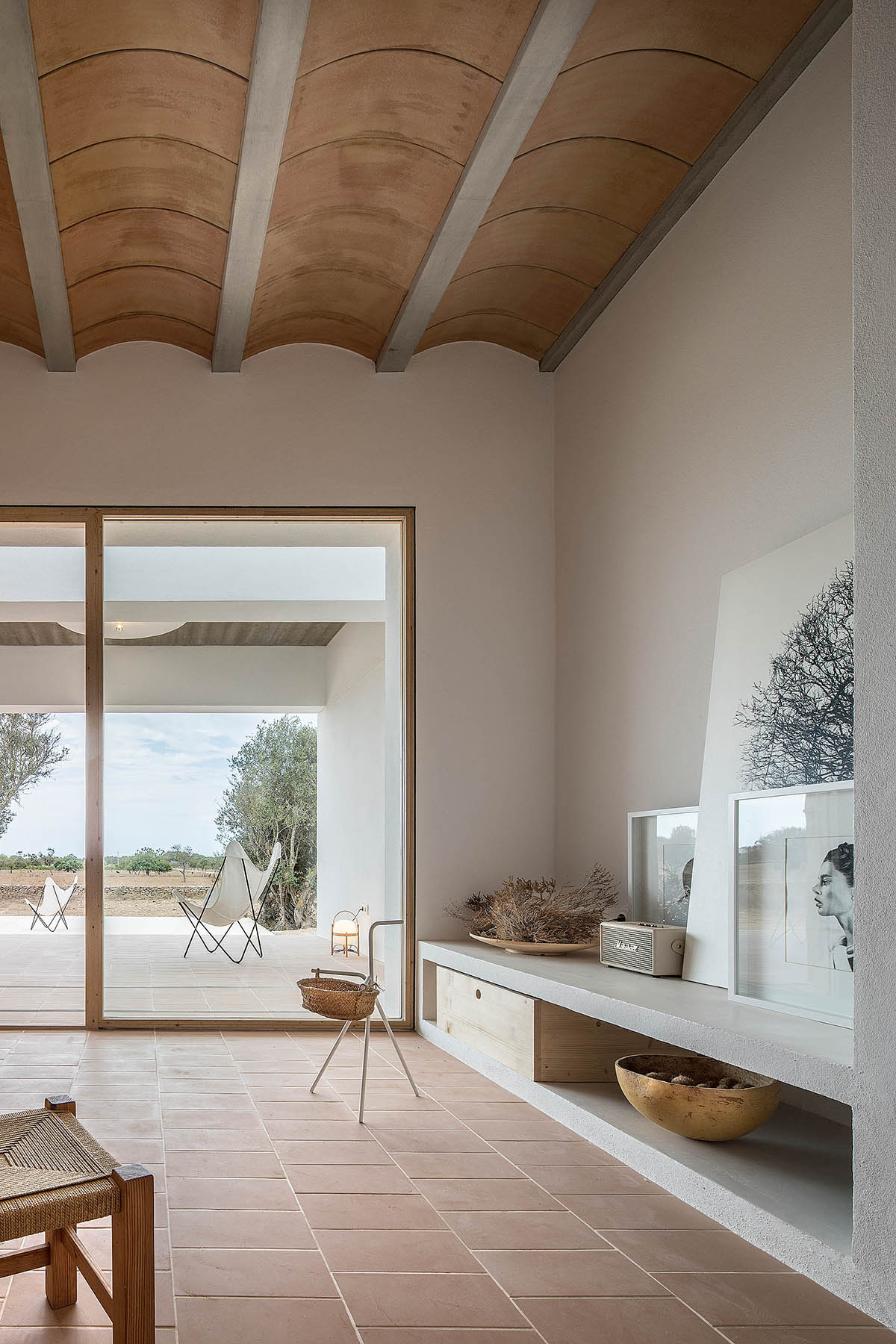
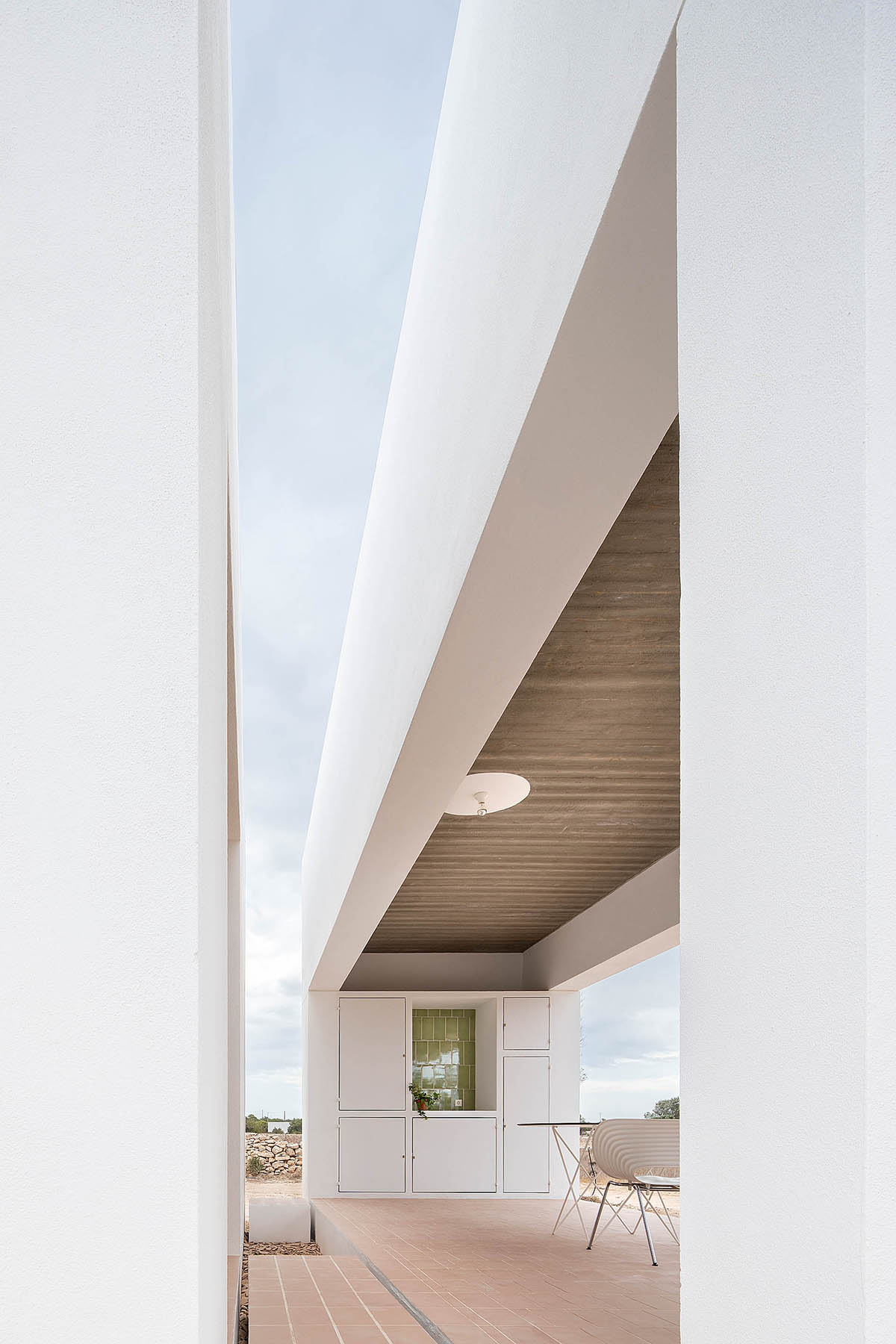
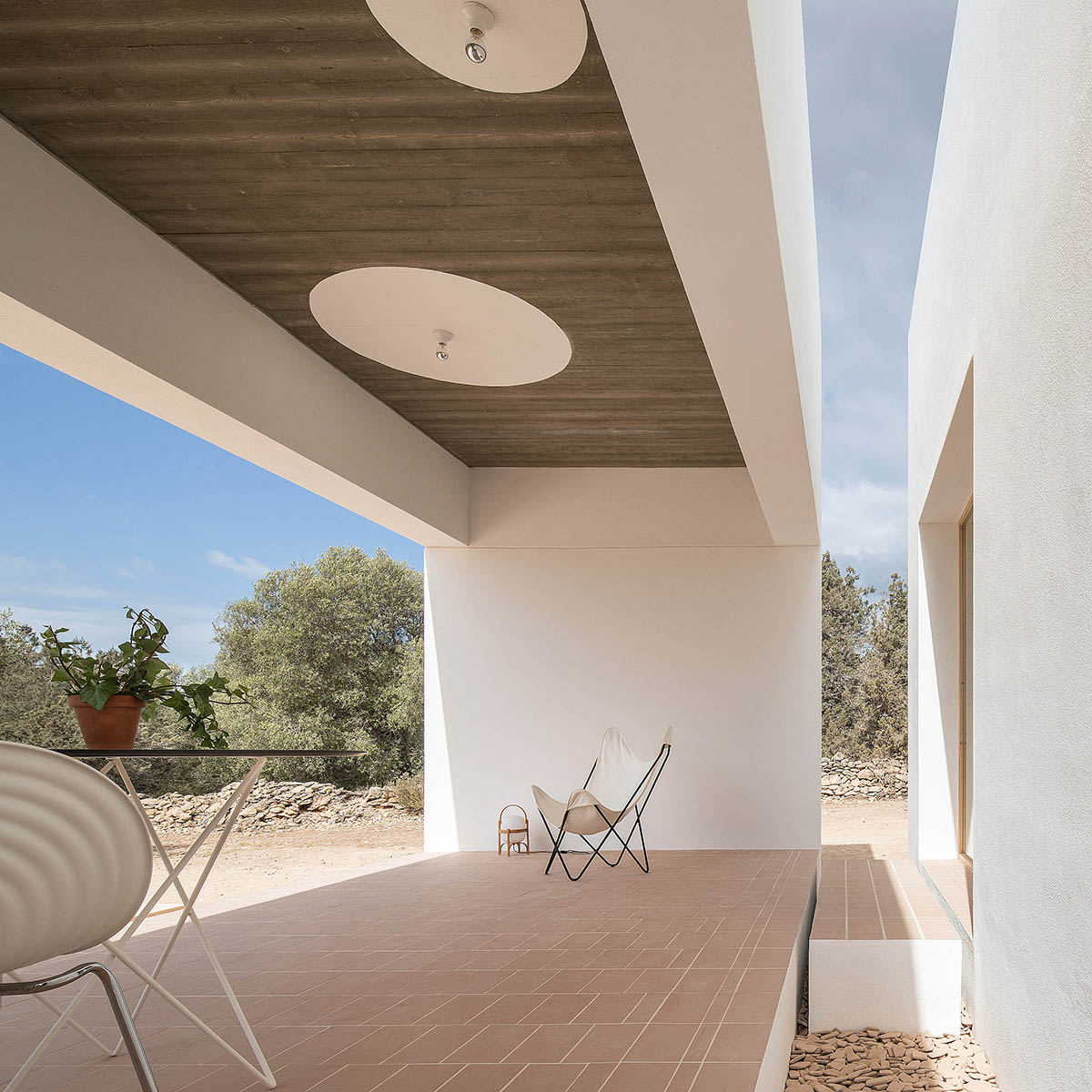
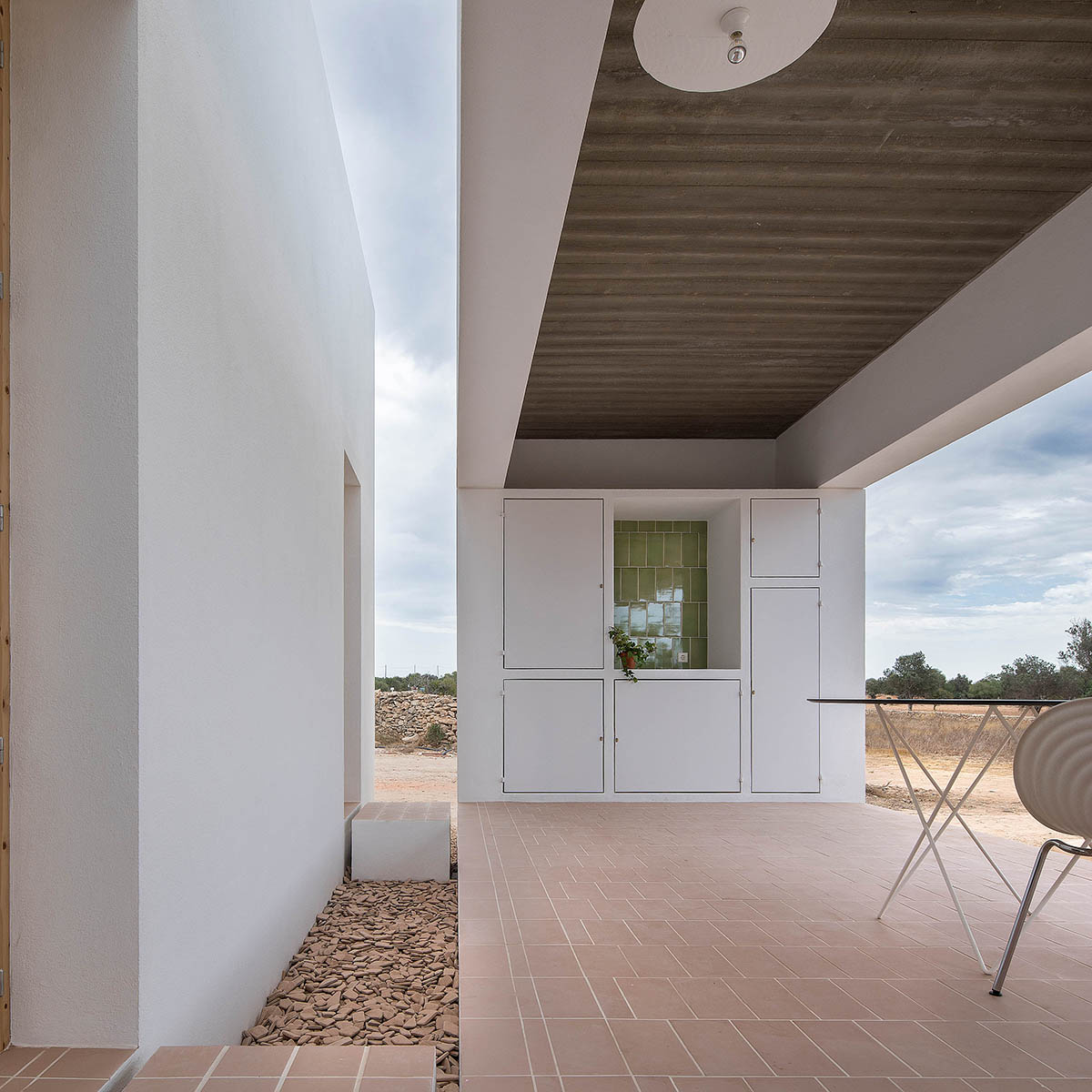
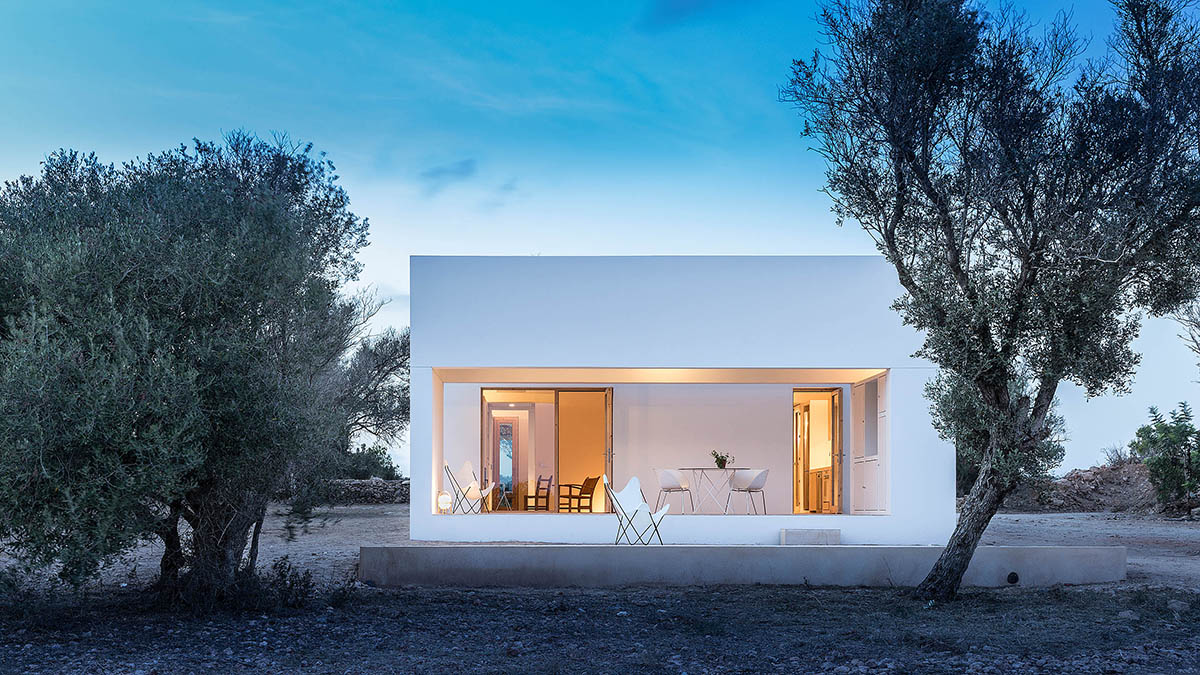
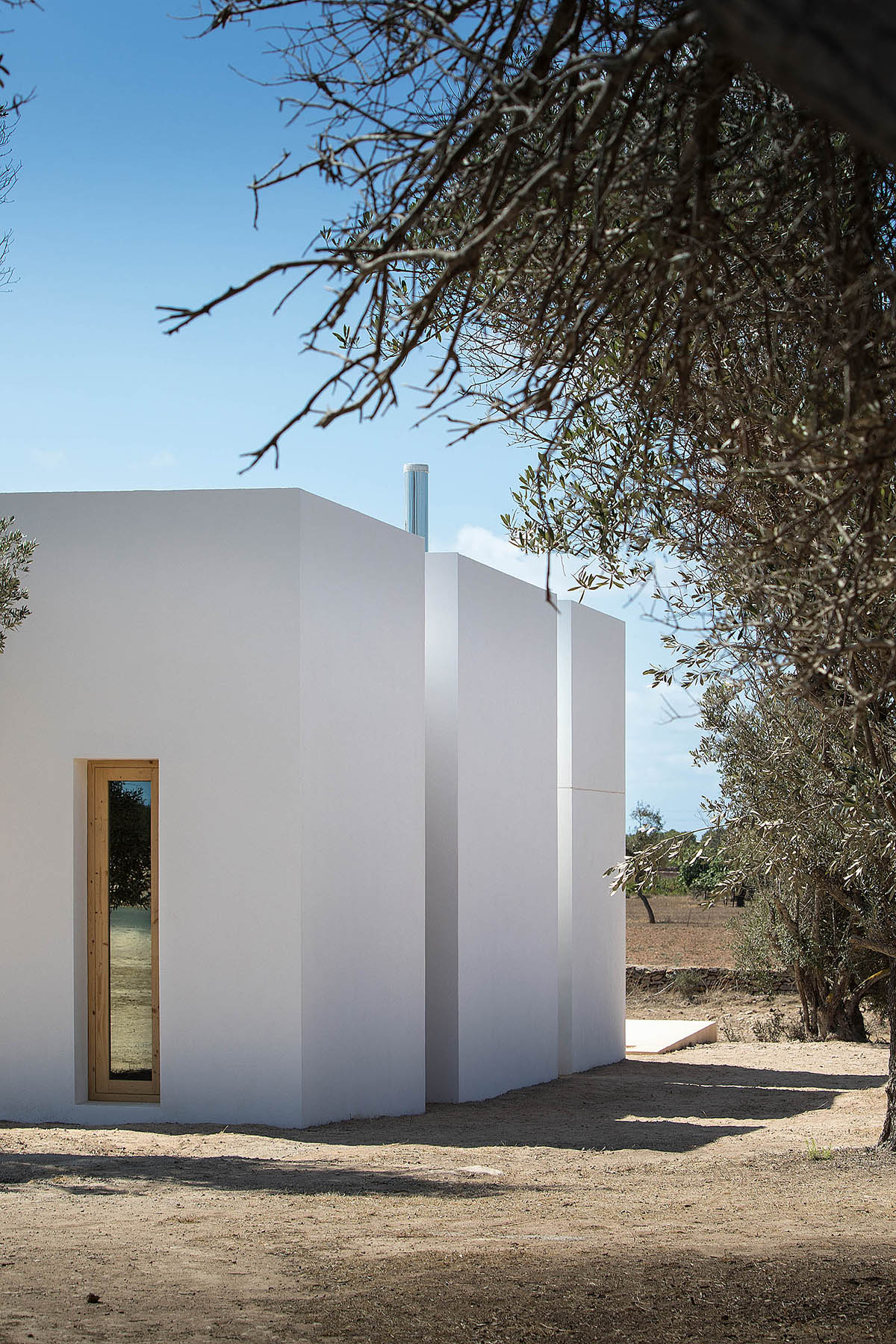
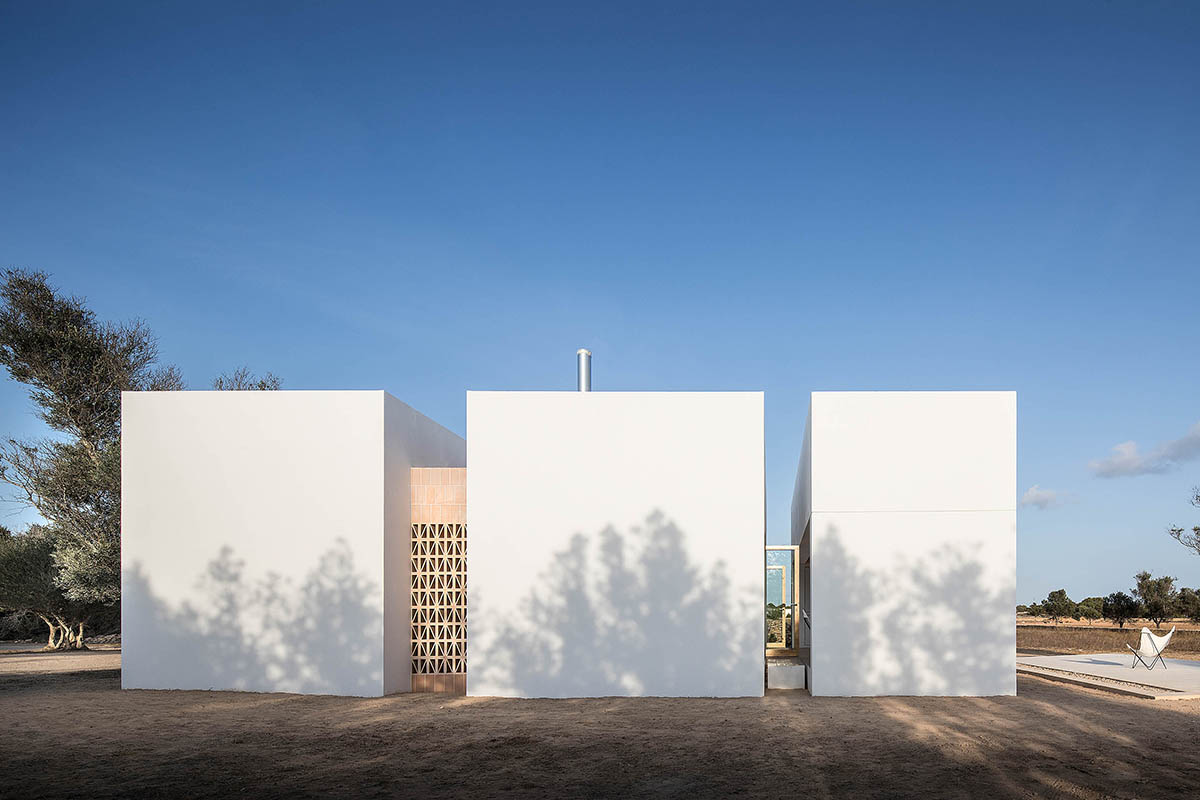

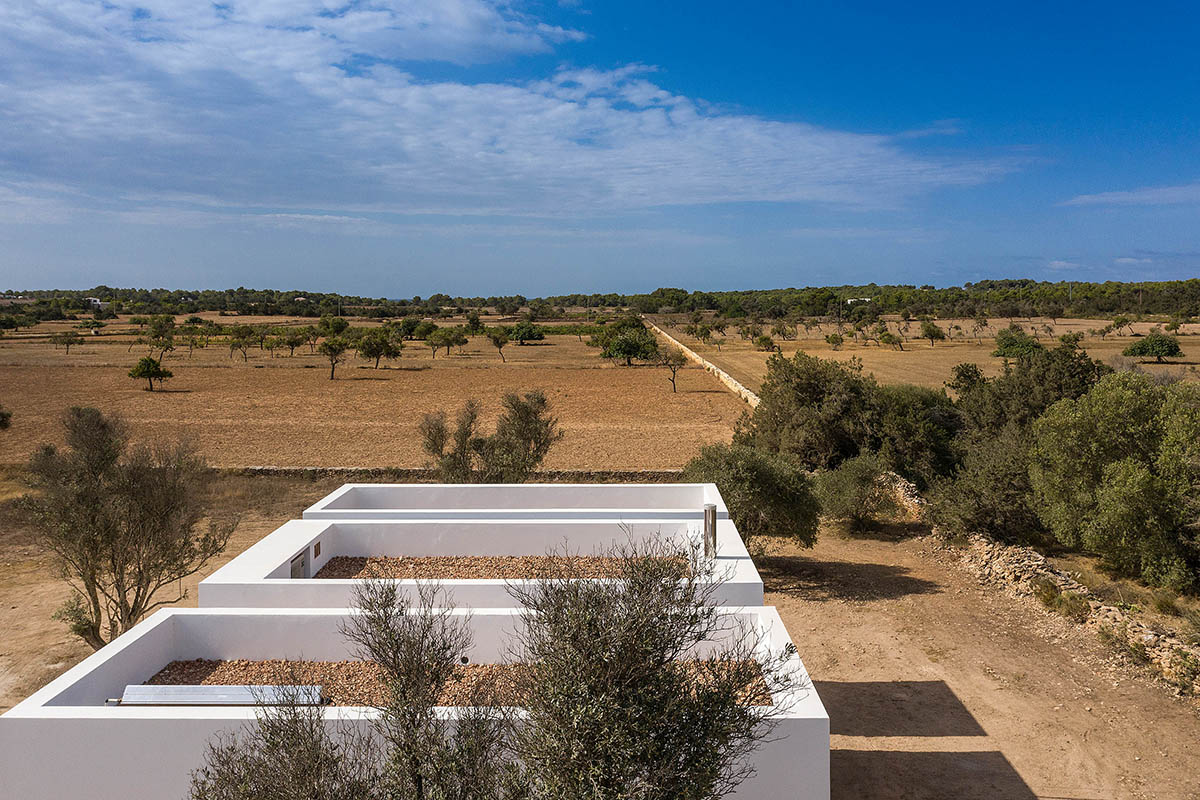
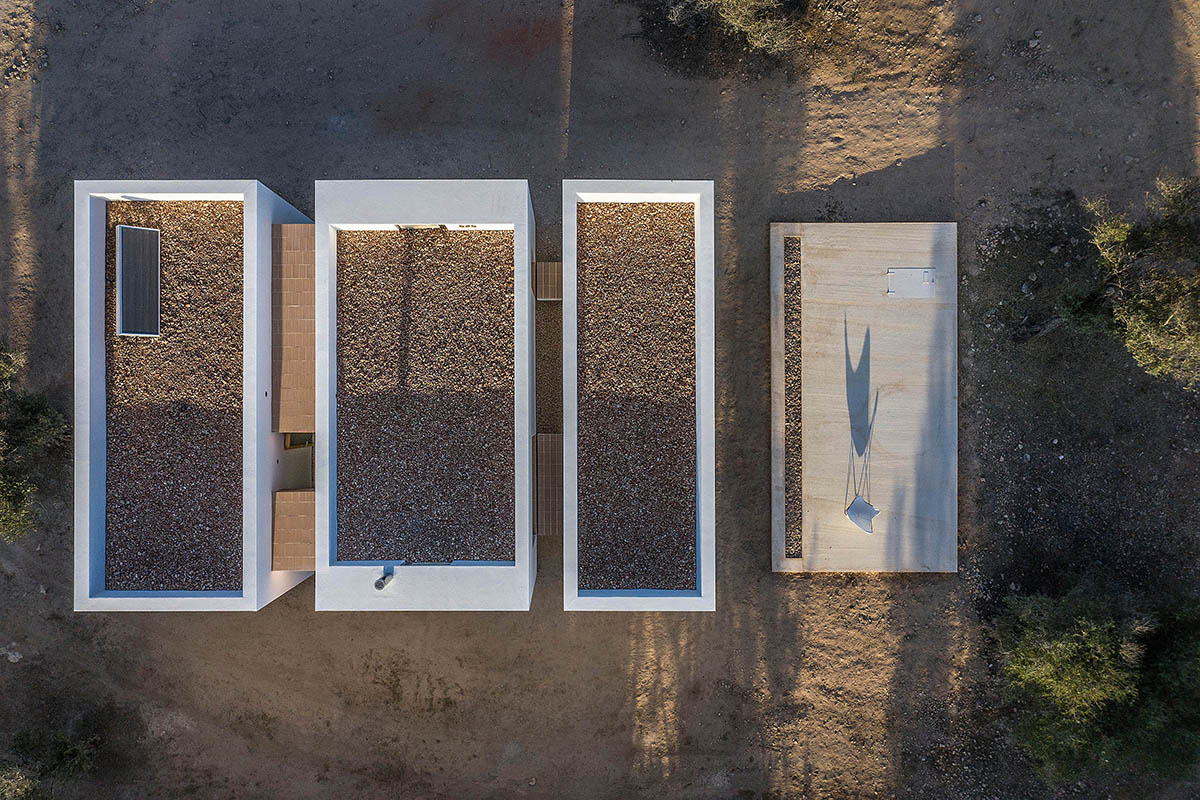
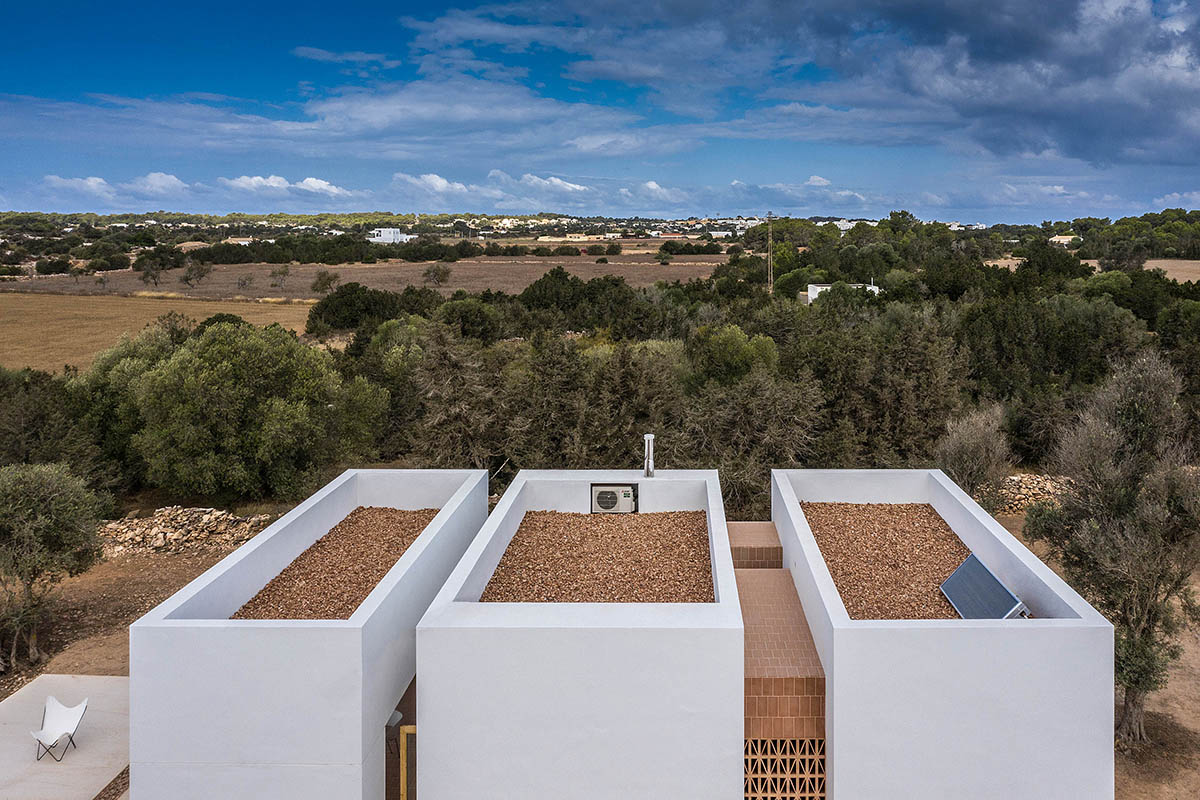
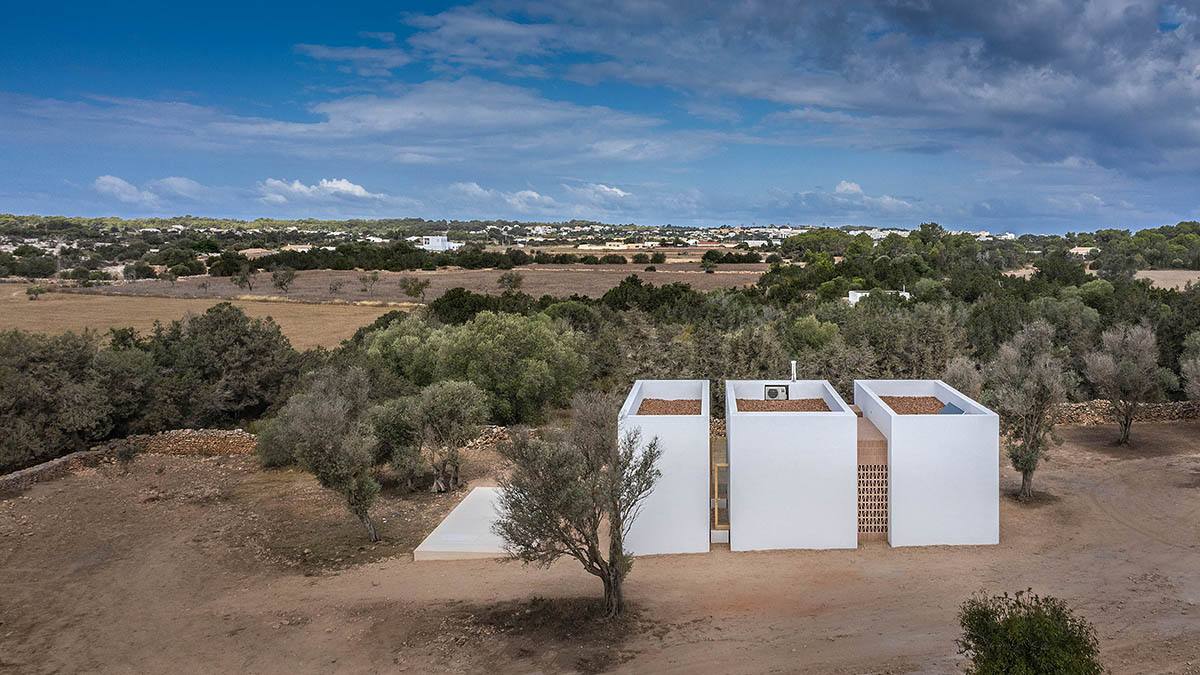
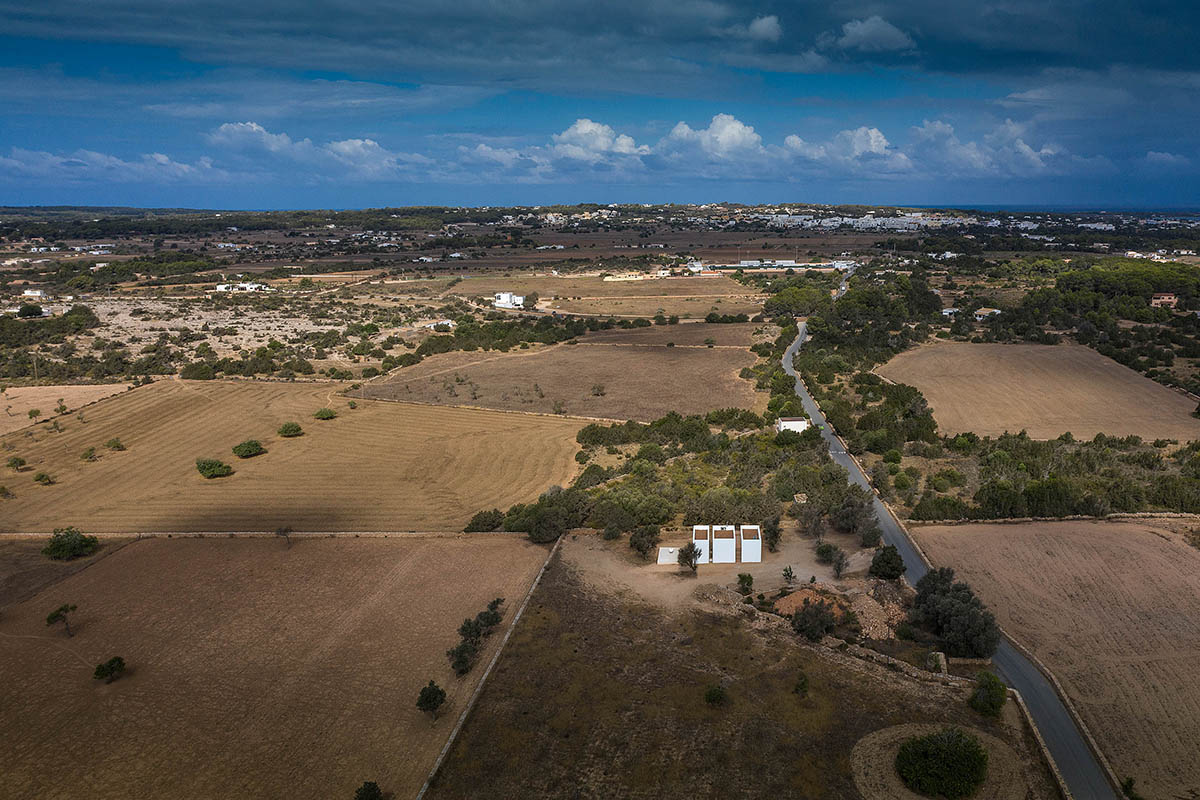
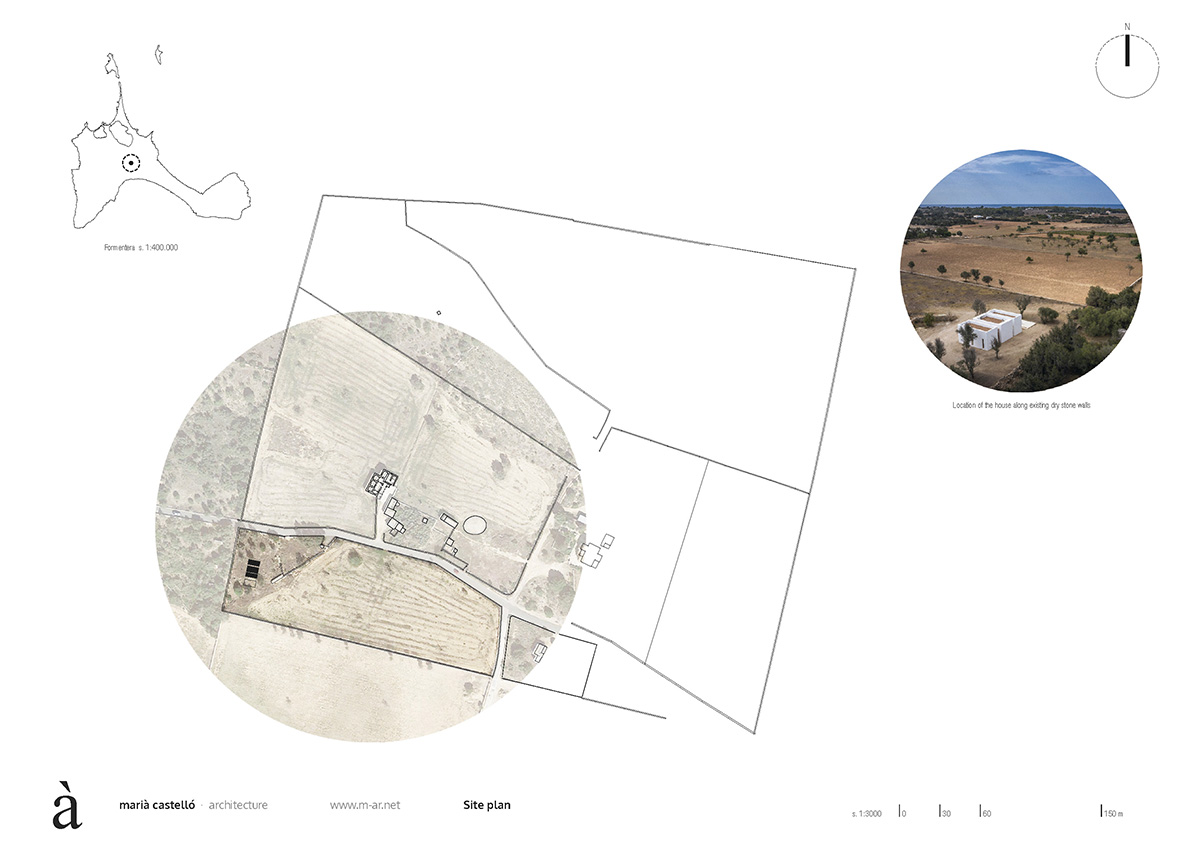
Site plan
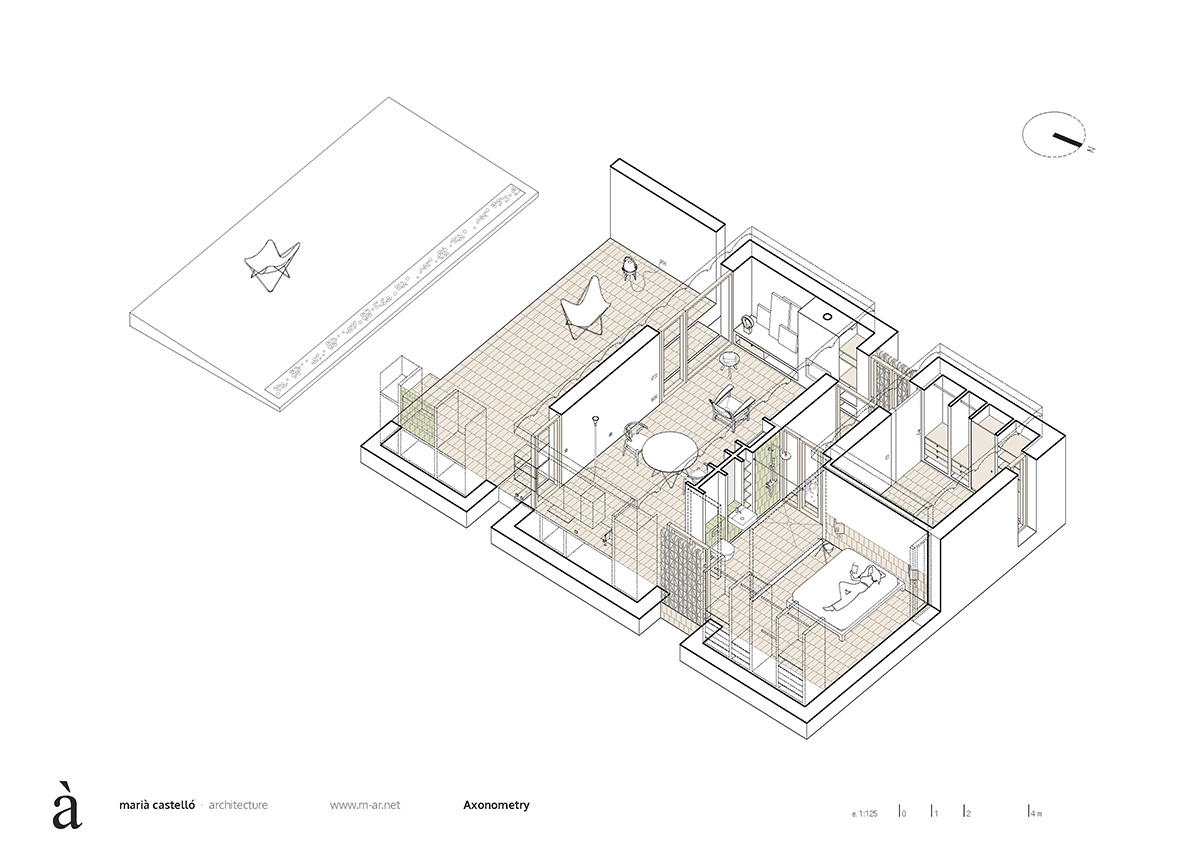
Axonometric drawing
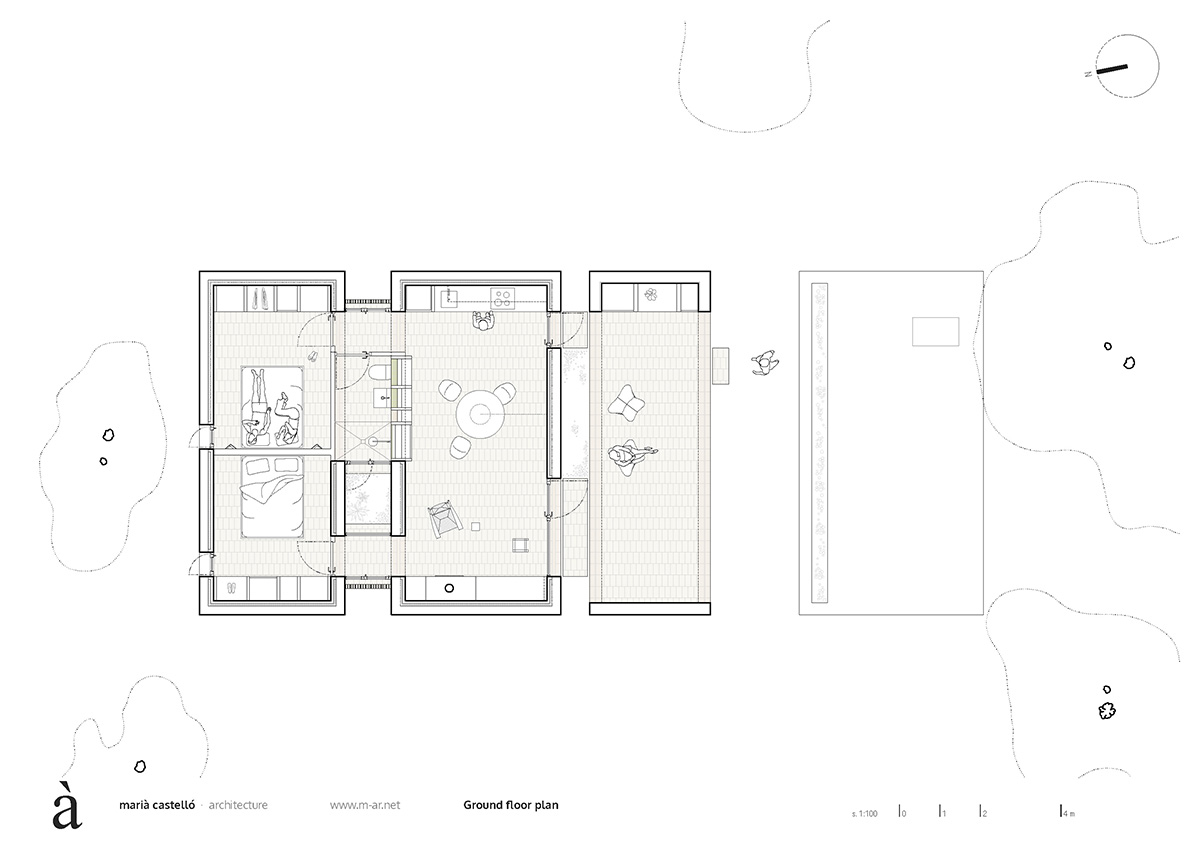
Ground floor plan
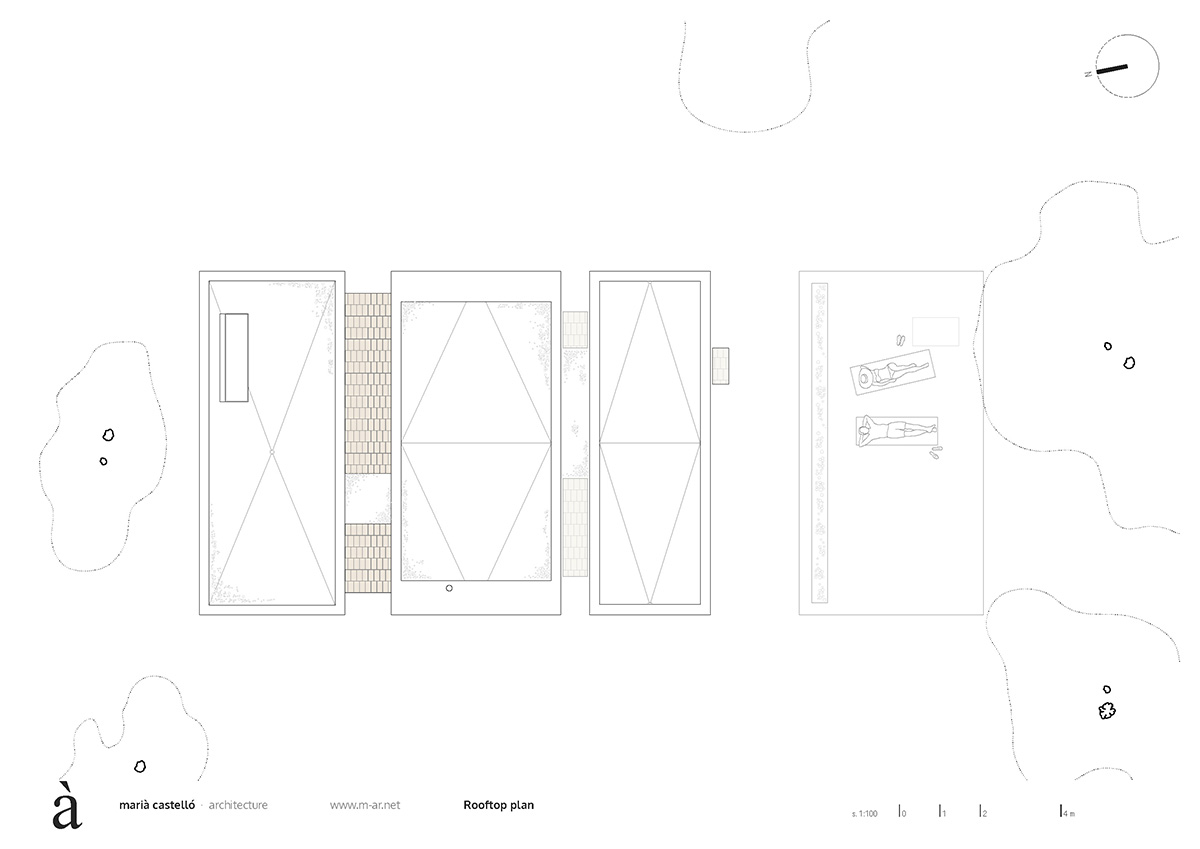
Rooftop plan
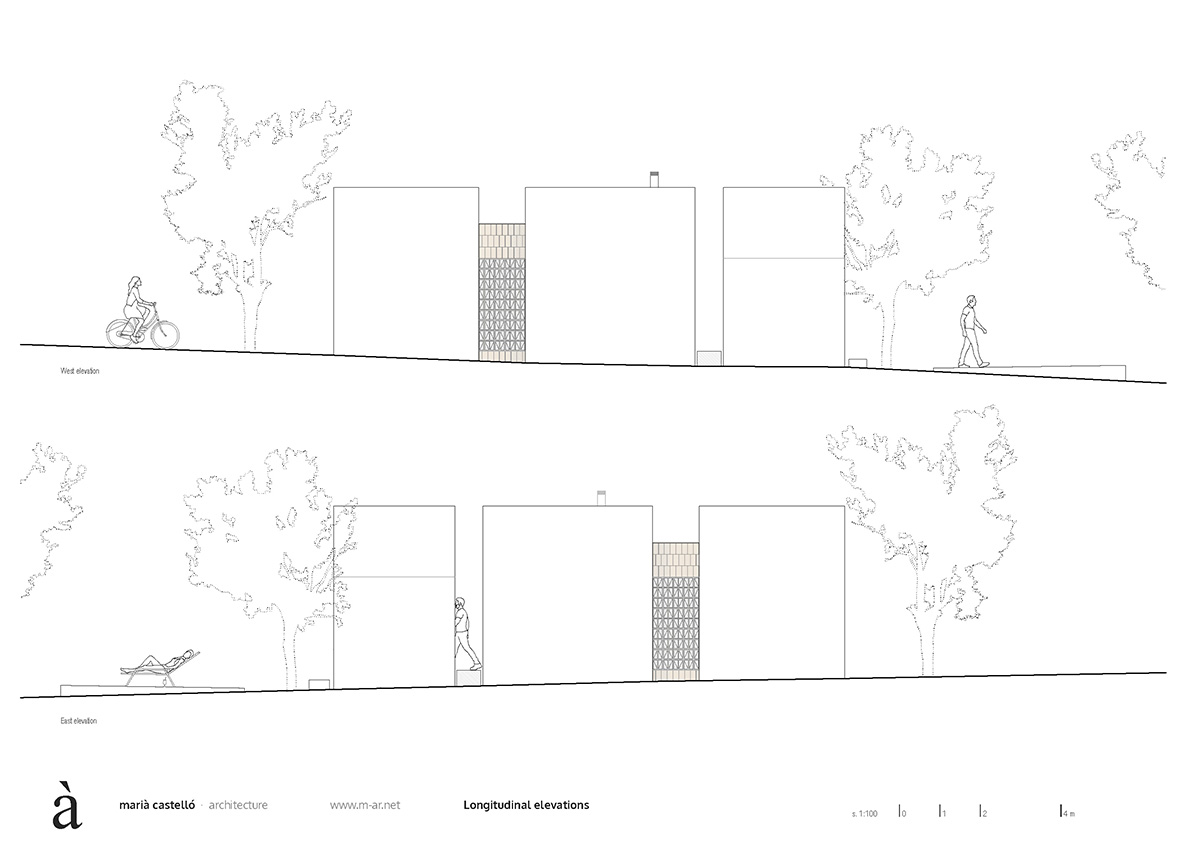
Longitudinal elevations
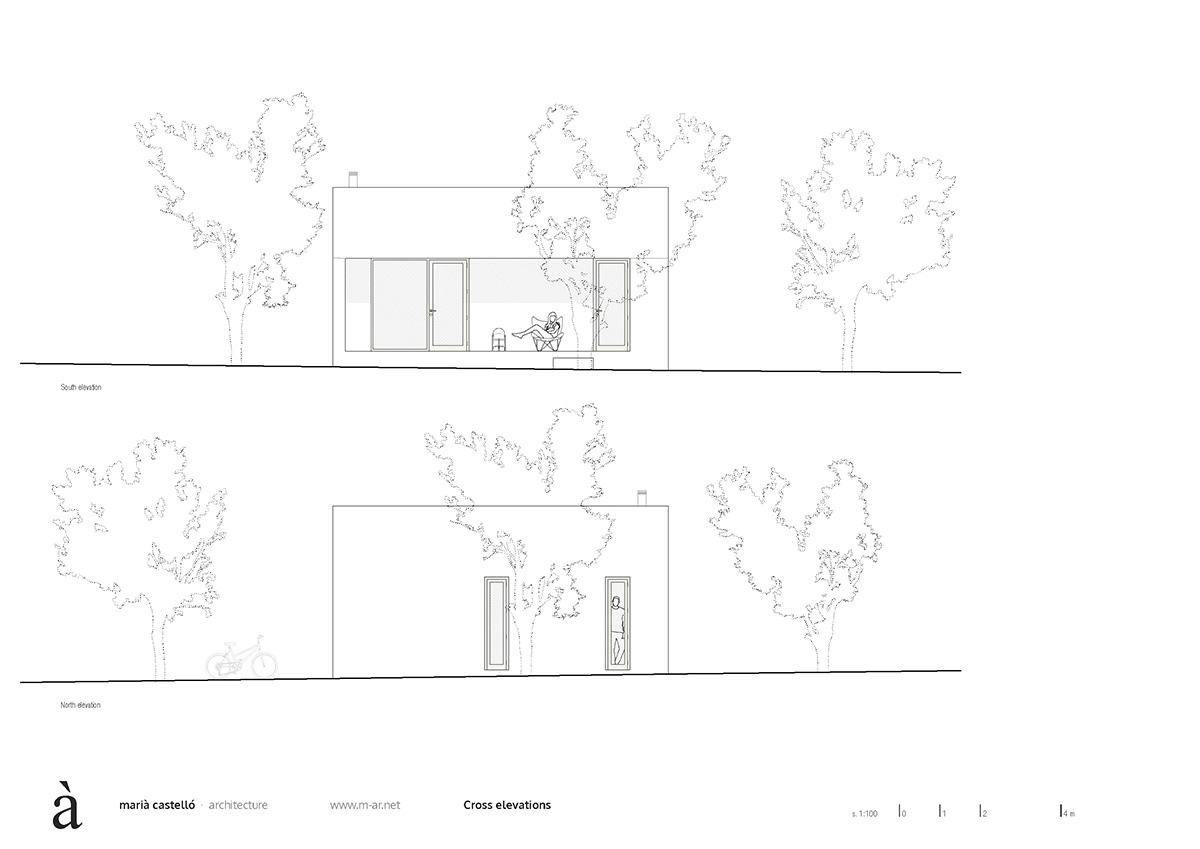
Cross elevations
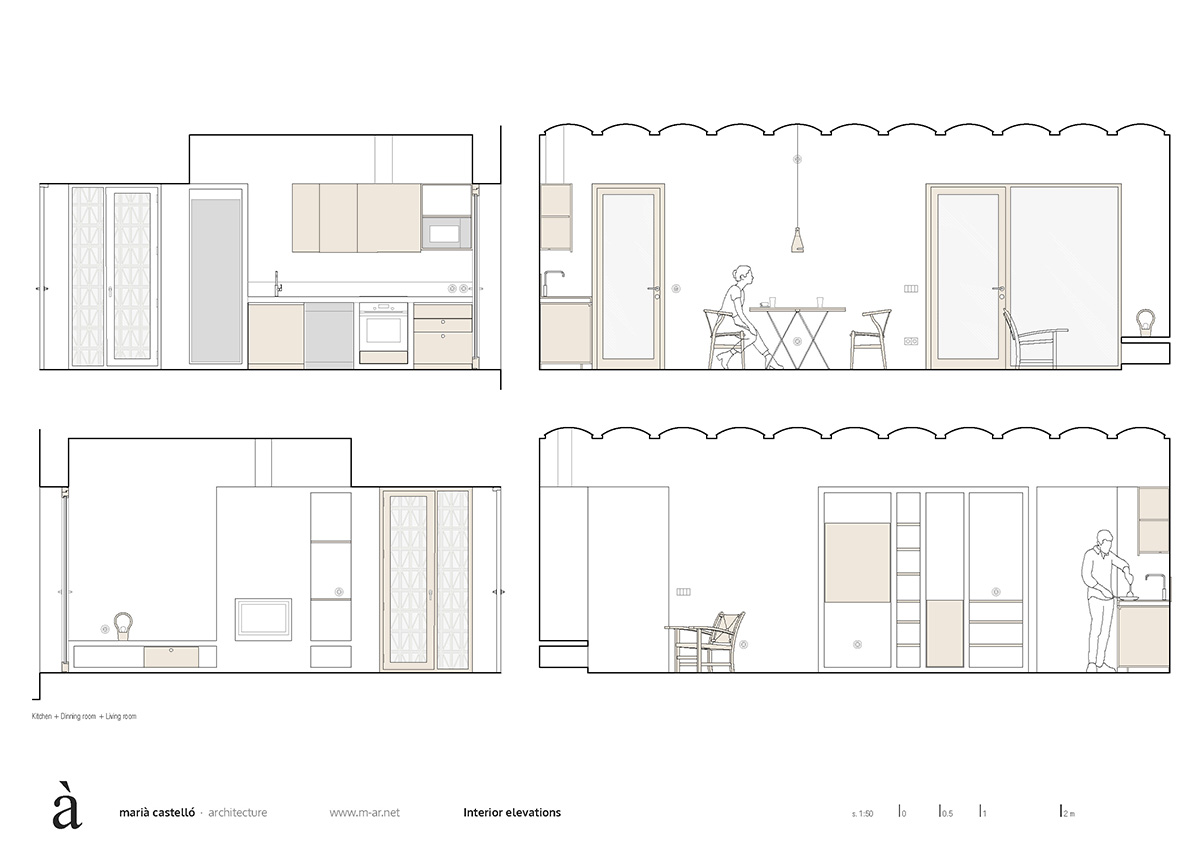
Interior elevations
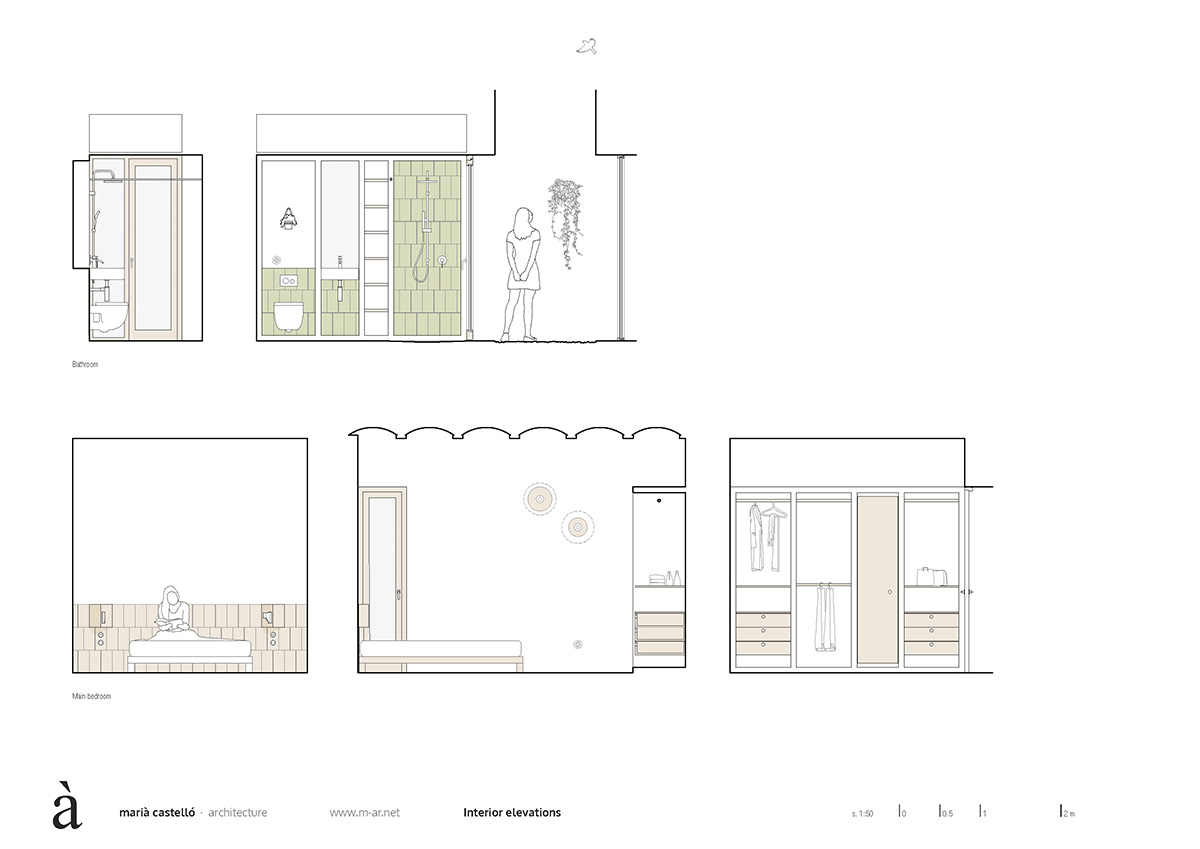
Interior elevations
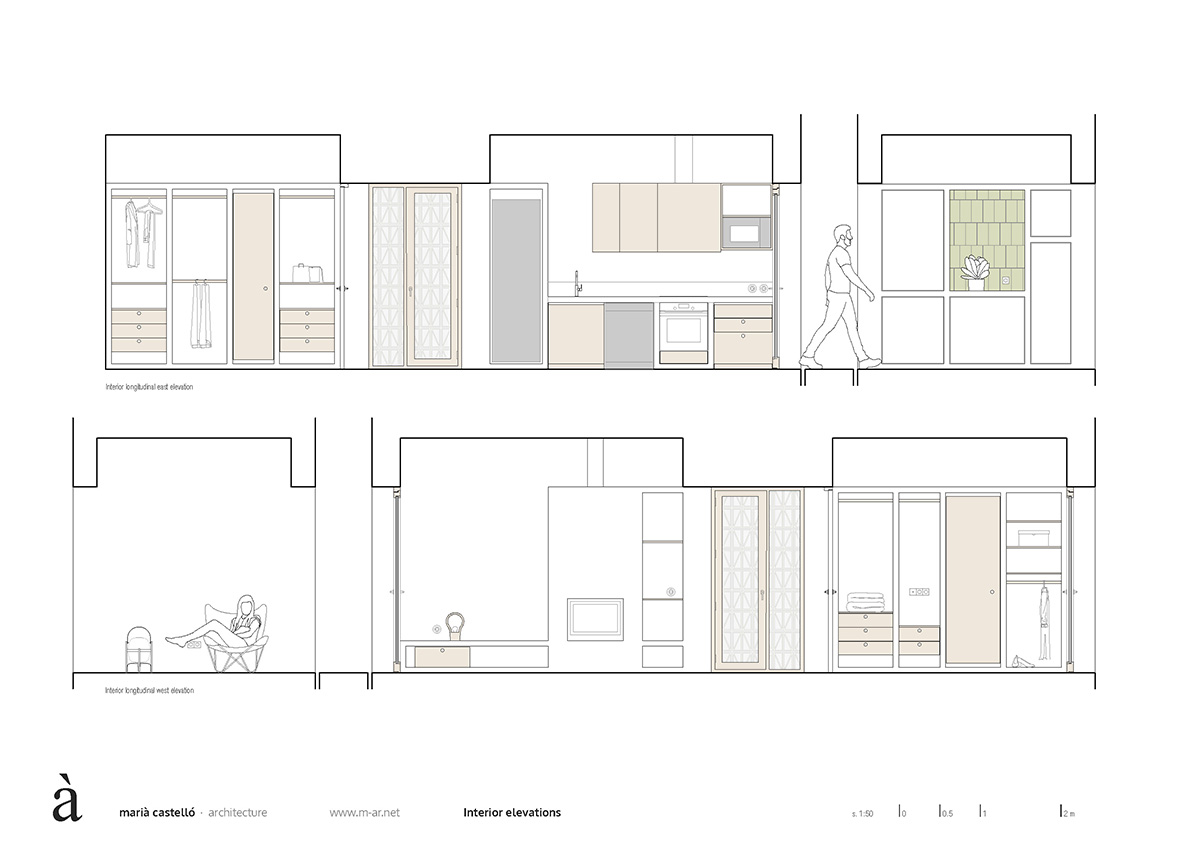
Interior elevations
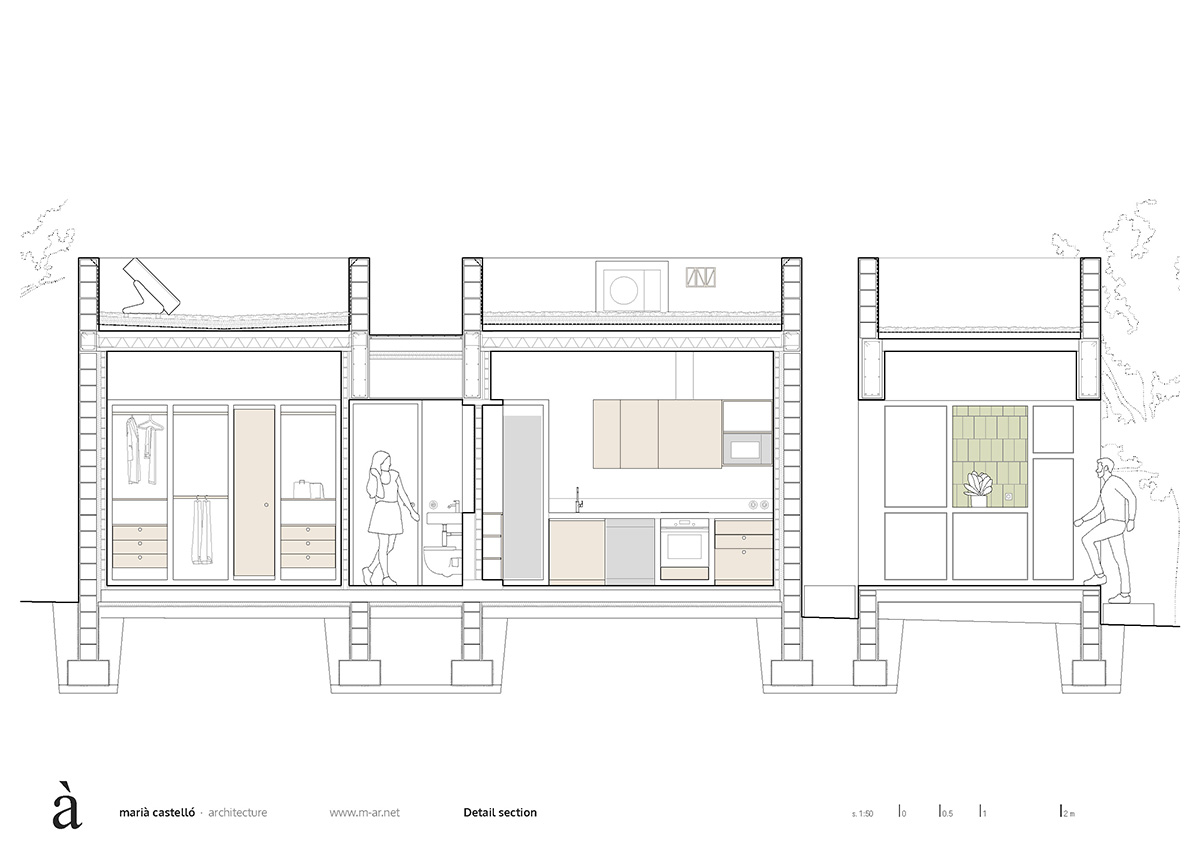
Detail section
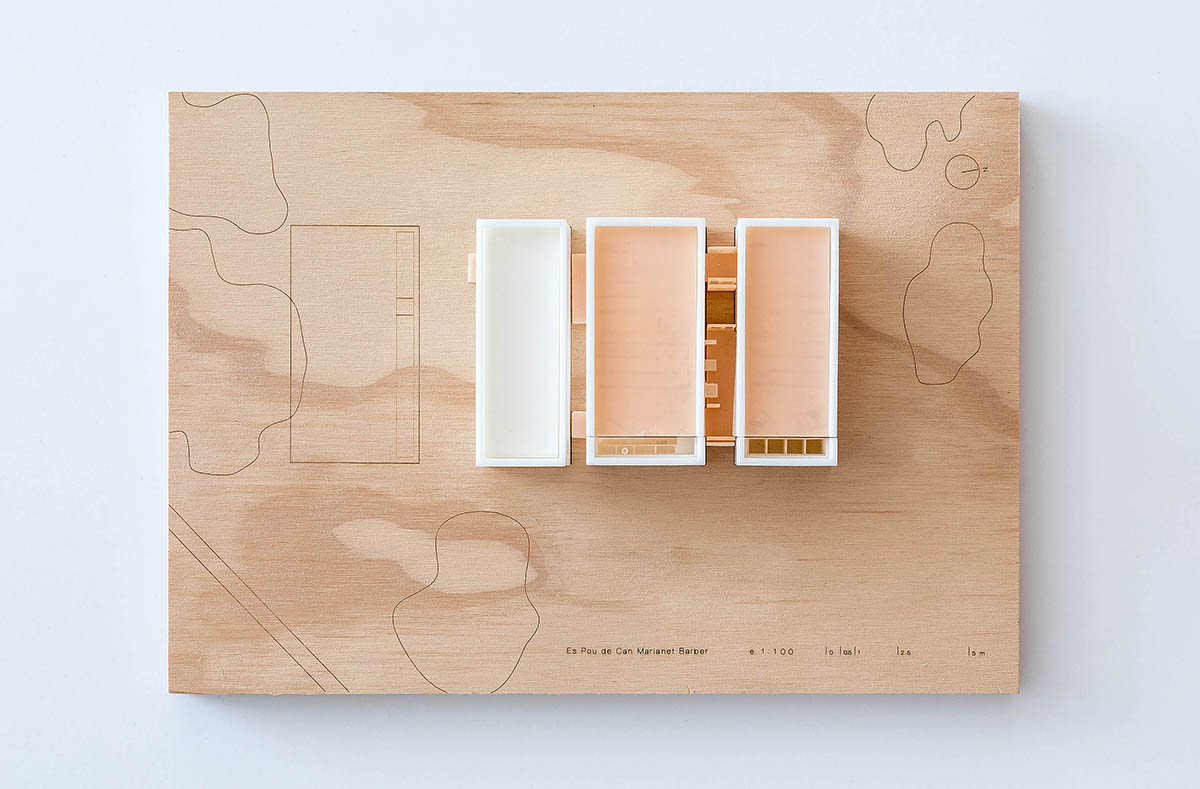
Model plan
Project facts
Project name: Es Pou
Architects: Marià Castelló
Location: Camí Vell de la Mola km. 1,8. Formentera, Spain
Promoter: Private
Construction Managers: Lorena Ruzafa + Marià Castelló
Building Engineer: José Luís Velilla Lon
Structure Engineer: Ferran Juan Nicolau
Facilities Engineer: Javier Colomar Riera
Design Team: Lorena Ruzafa y Marga Ferrer
Builder: Toni 13
Project: 2011
Building process: 2019-2021
Area: 70 m2 + 24 m2 de porche
All images © Marià Castelló
